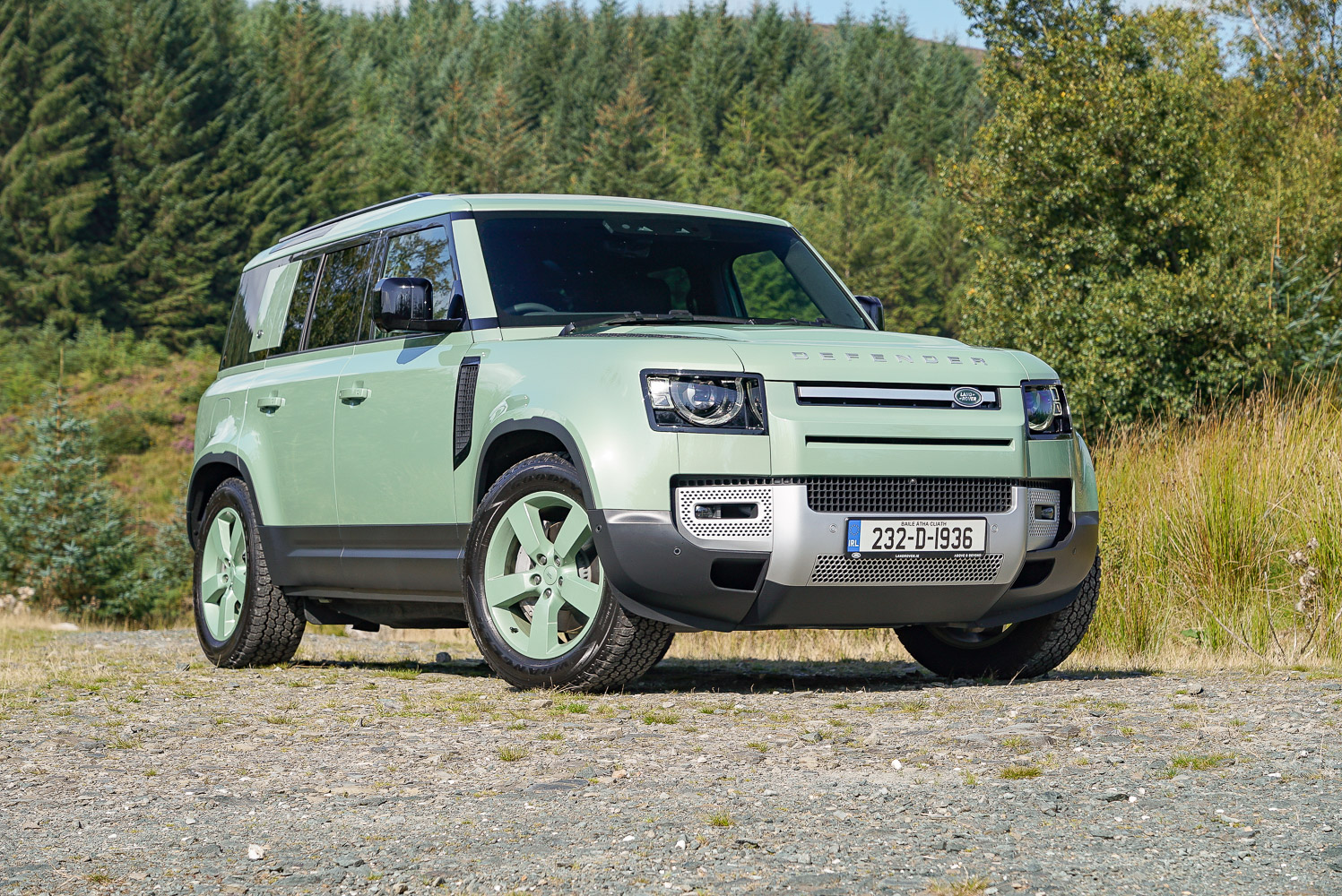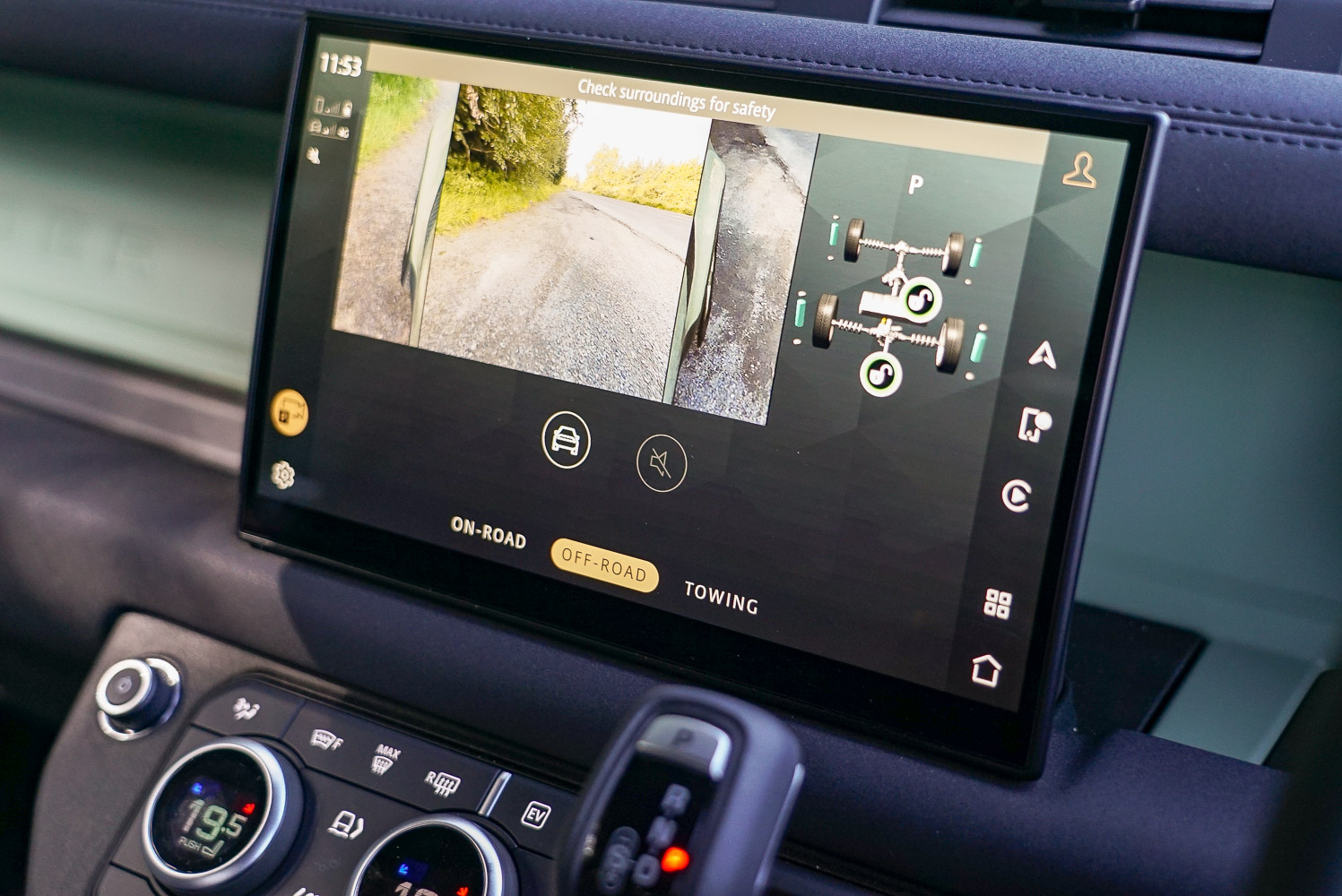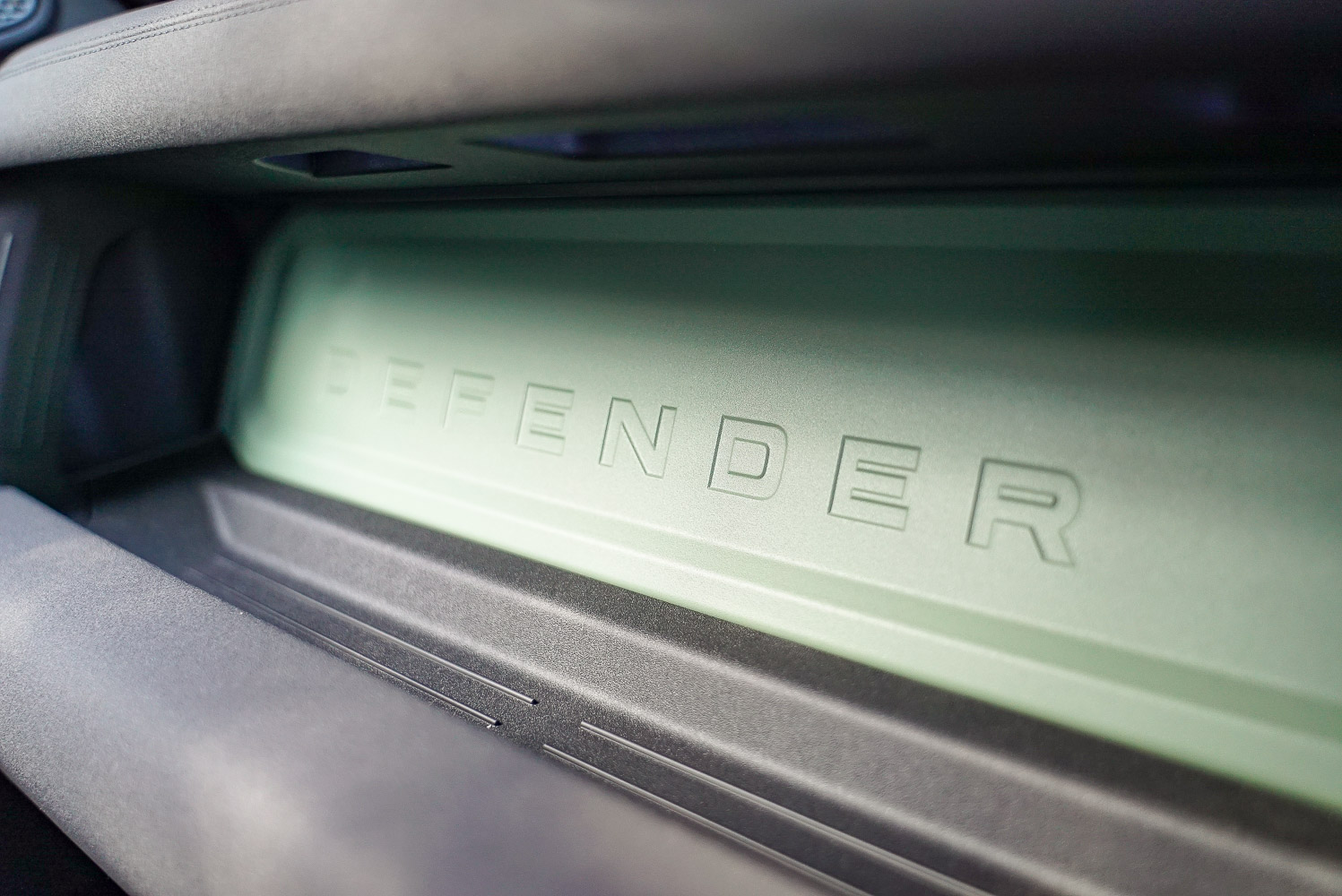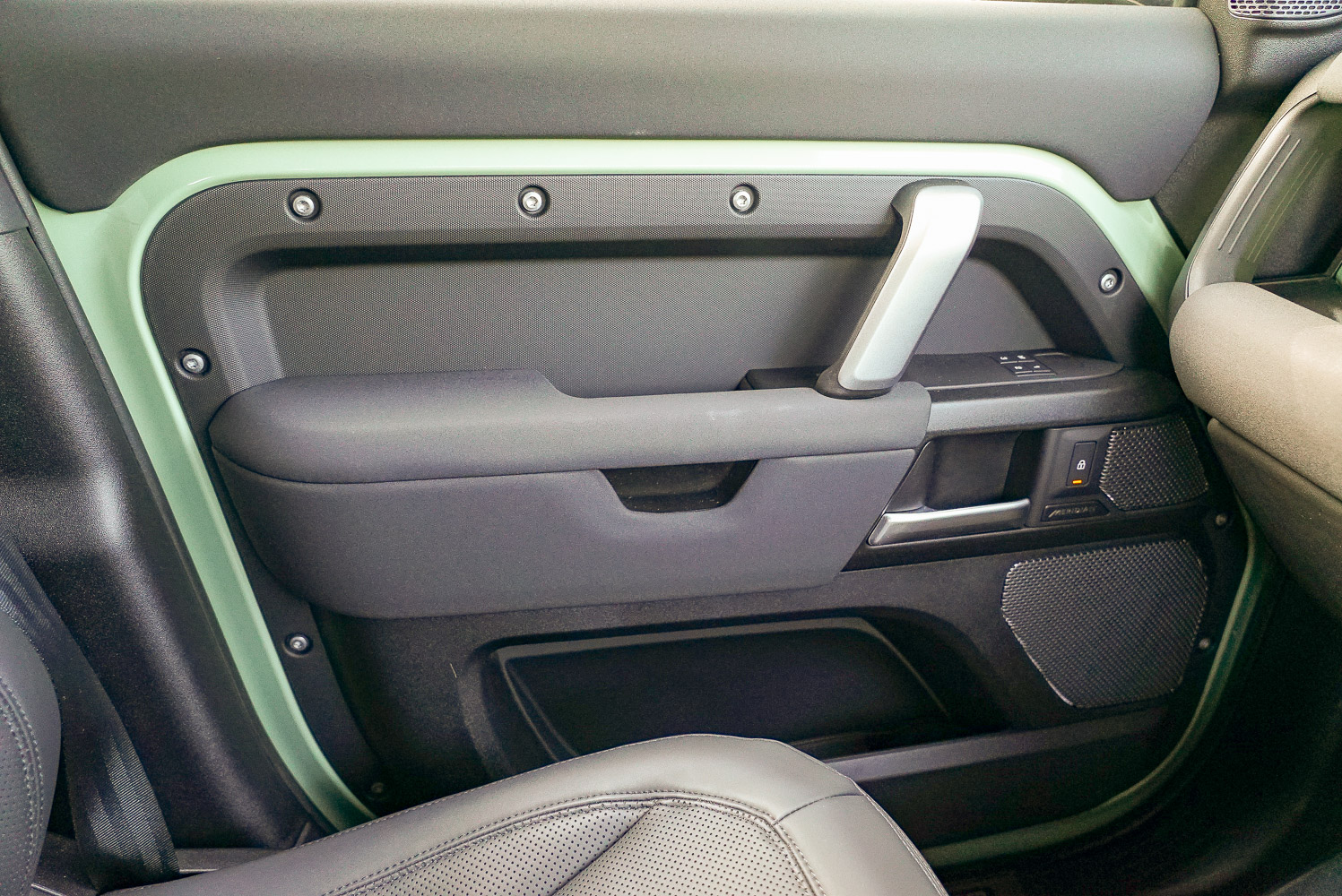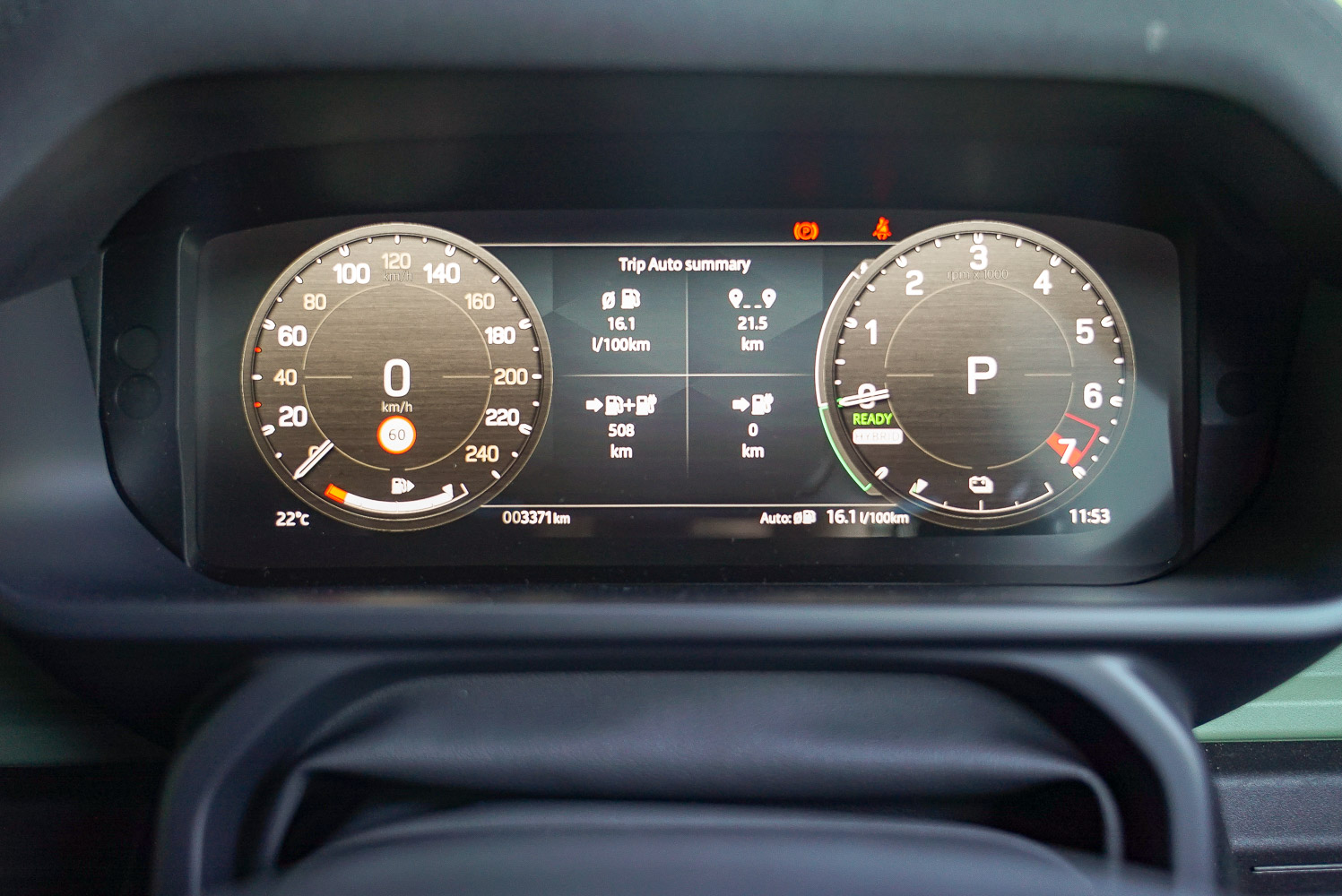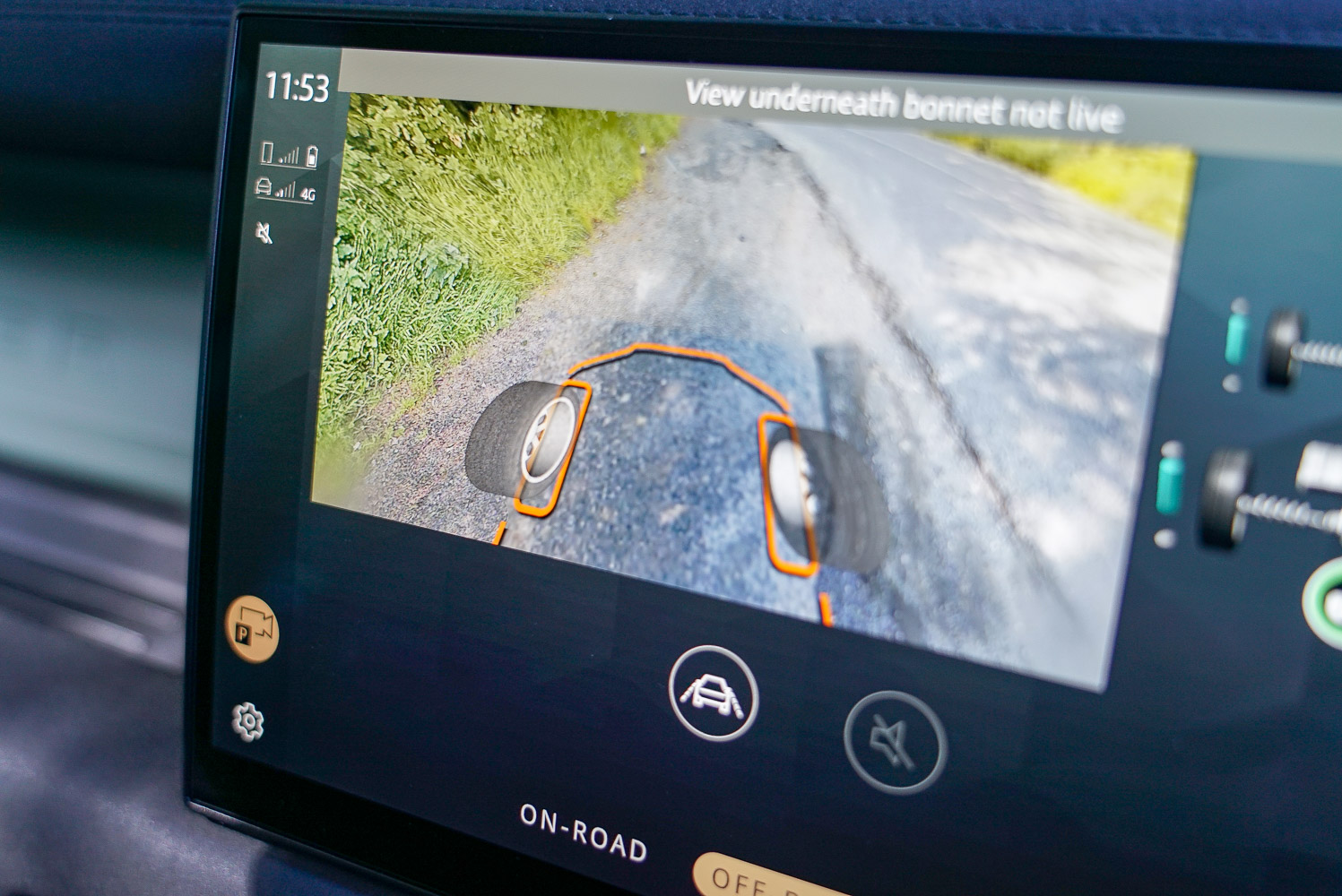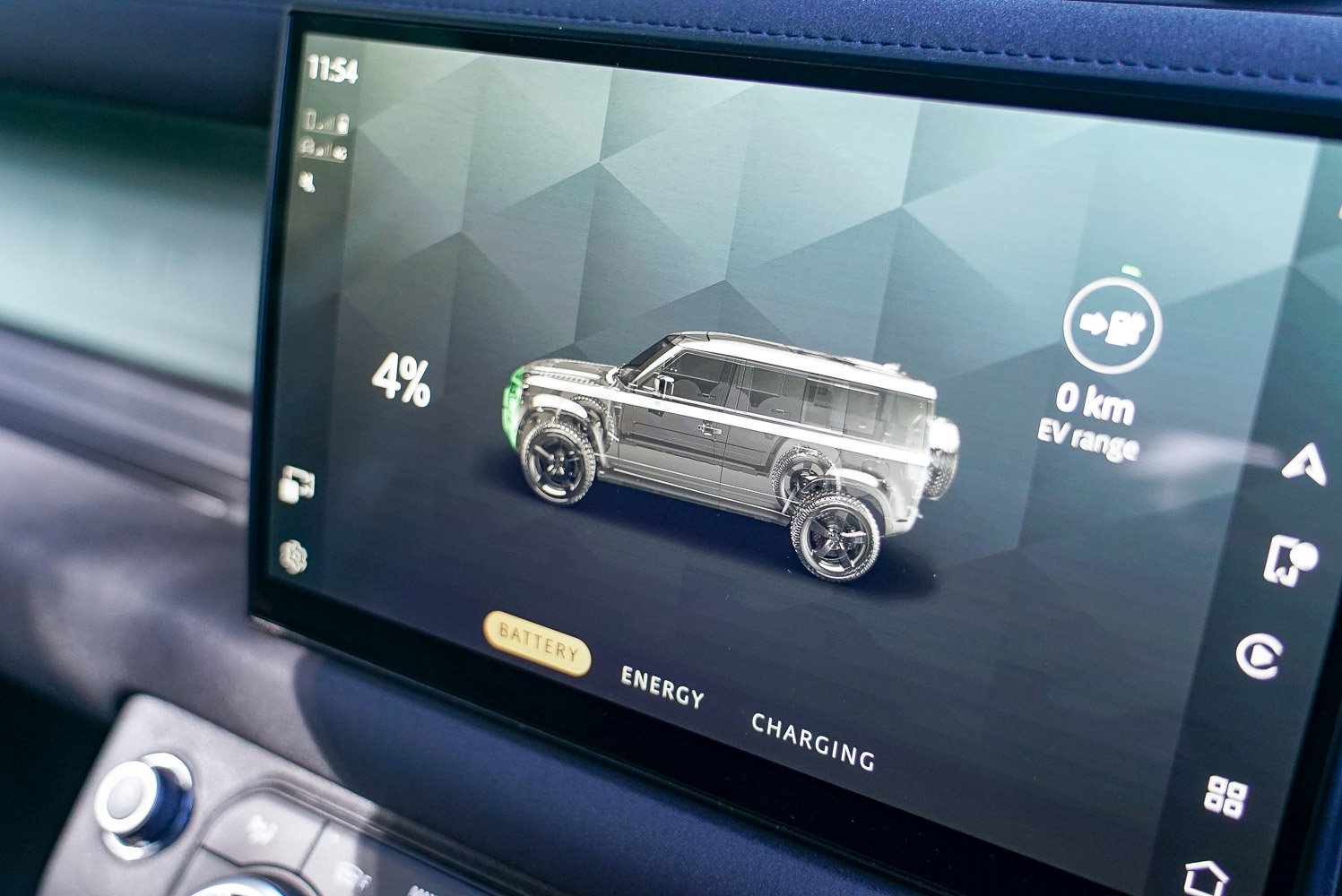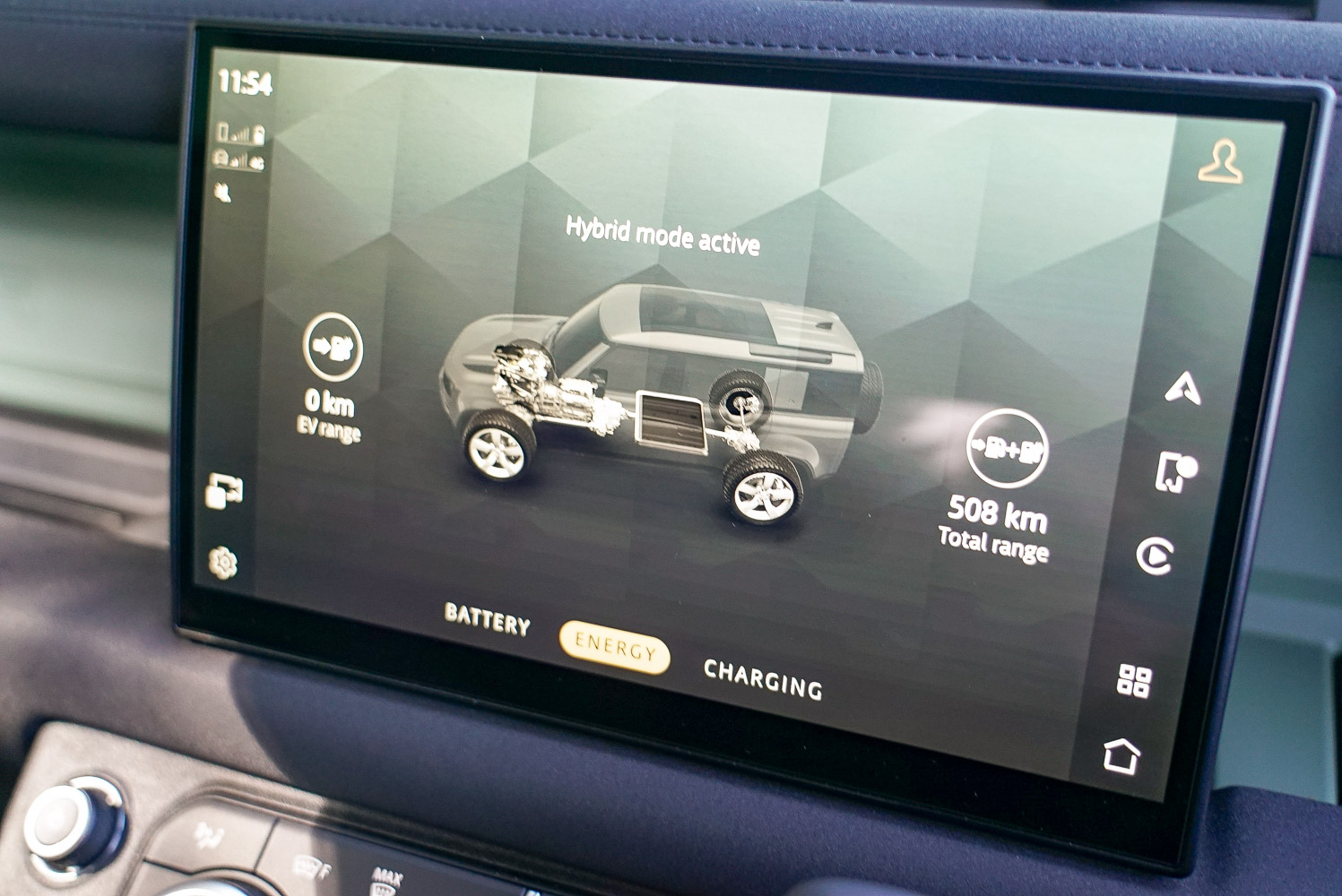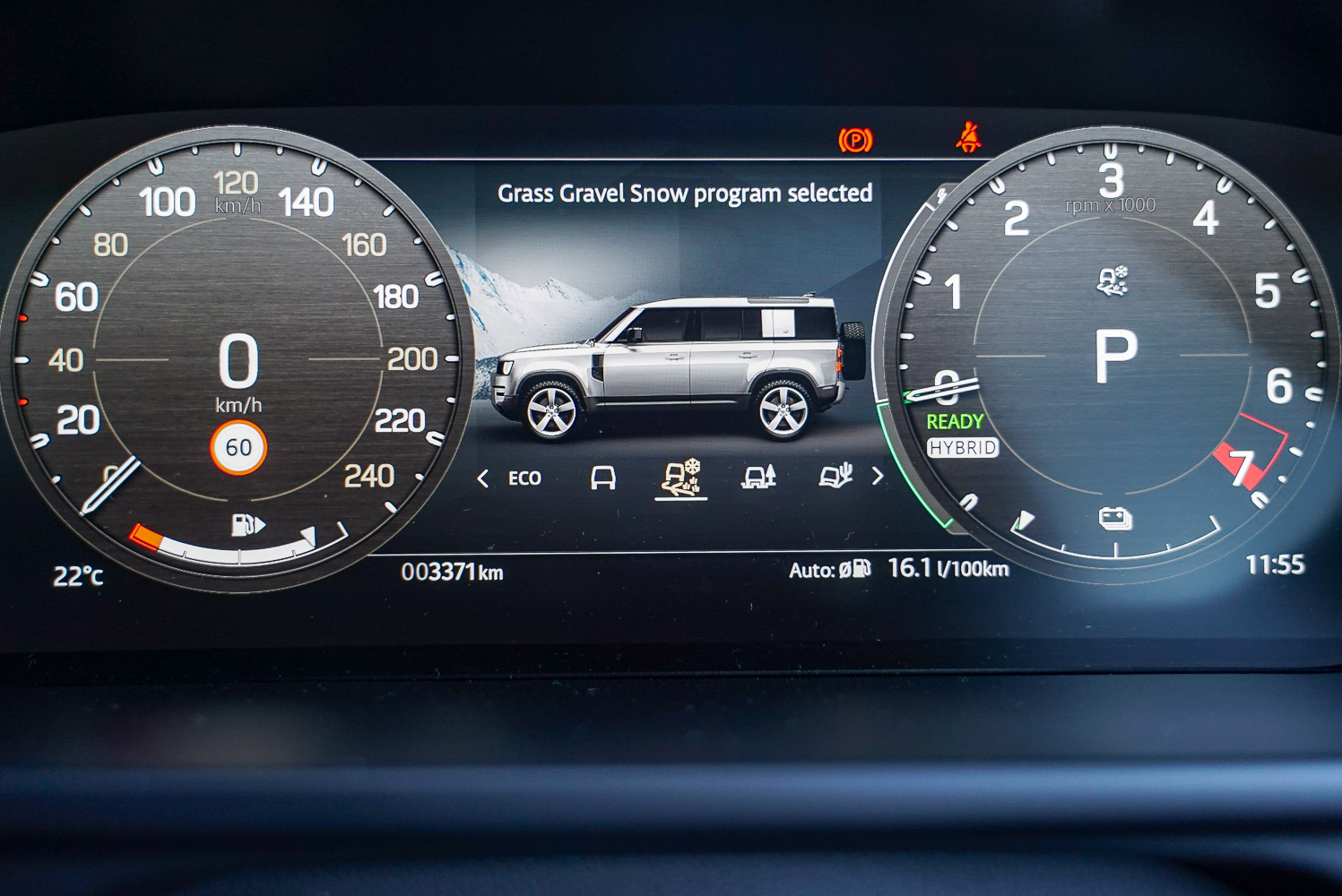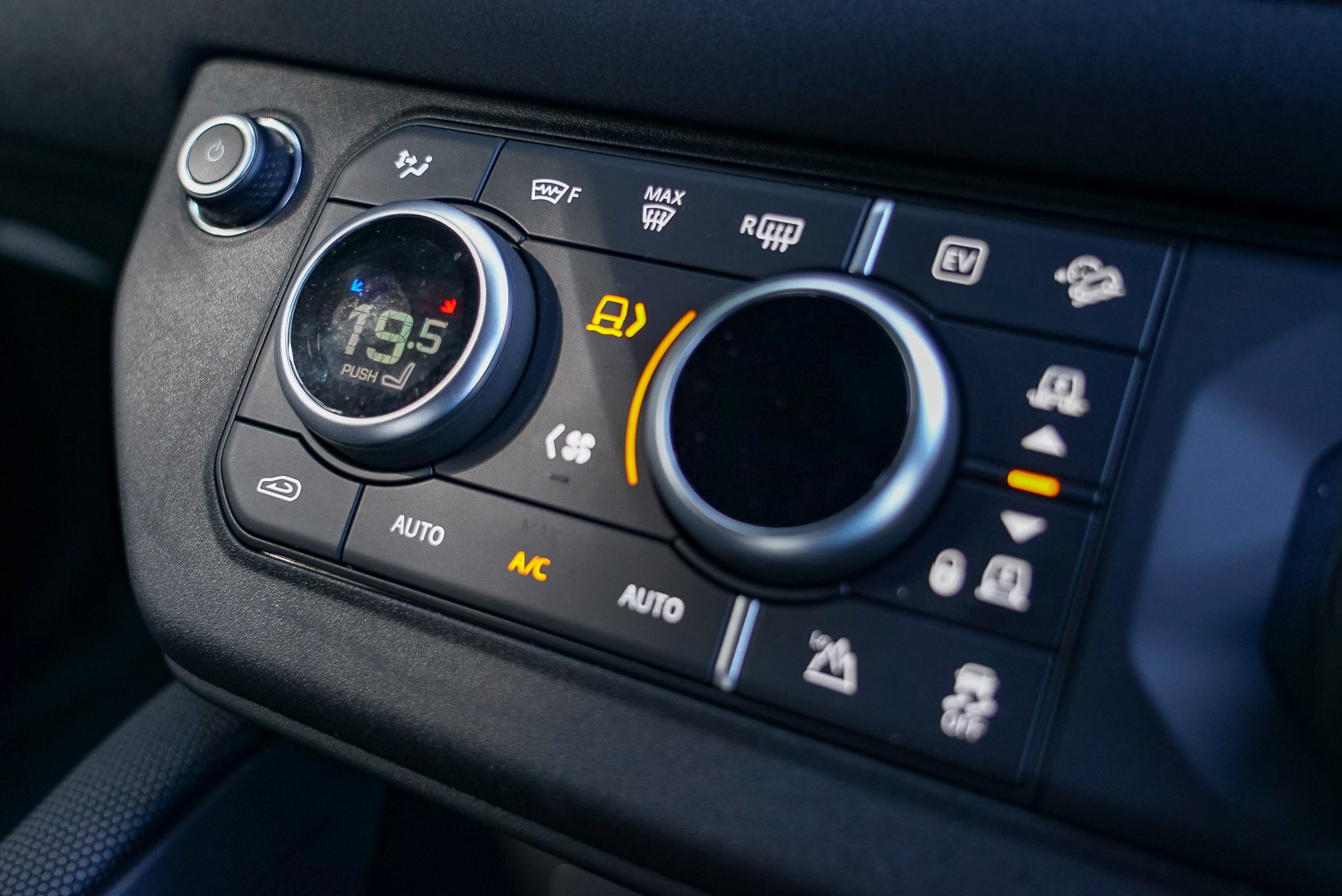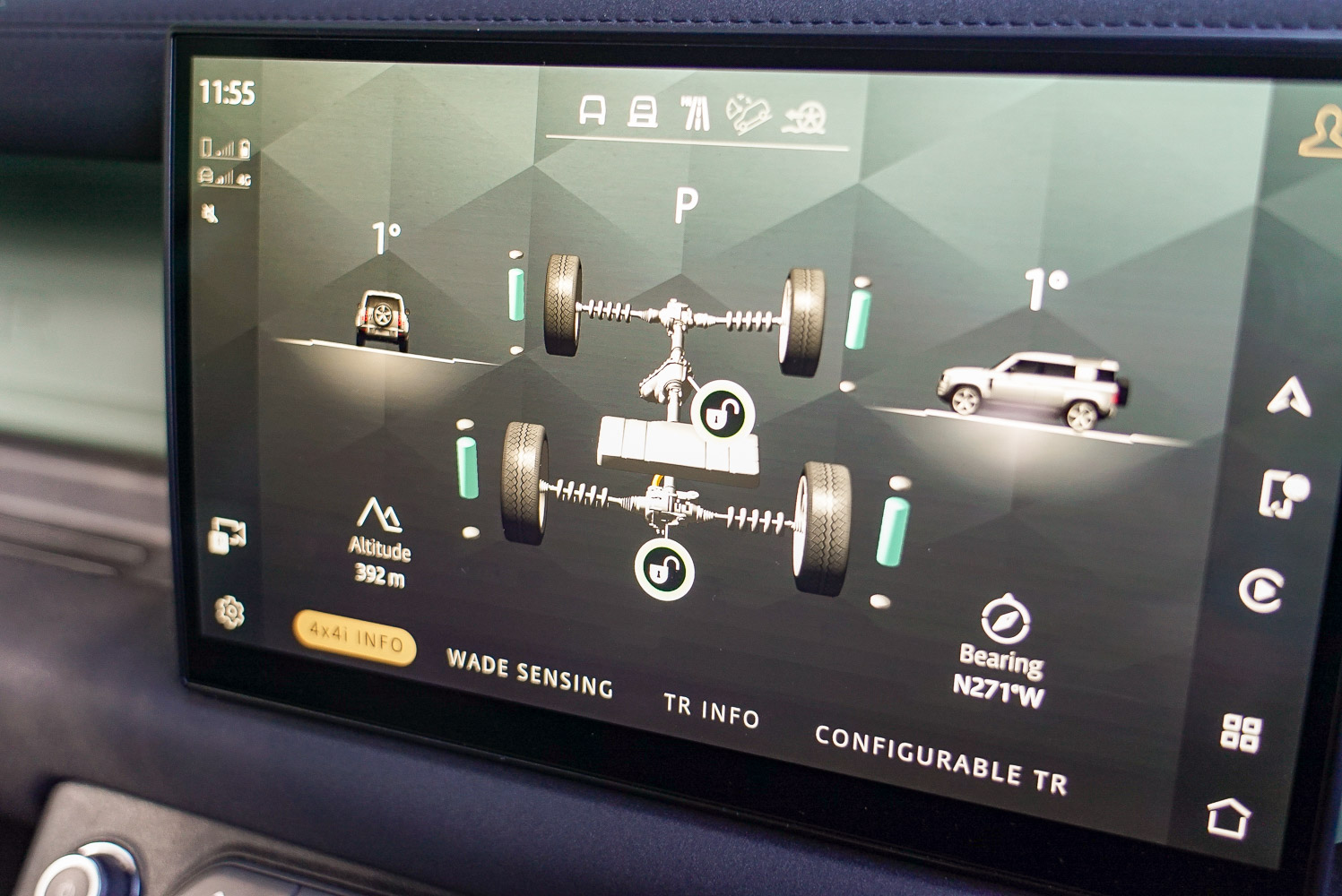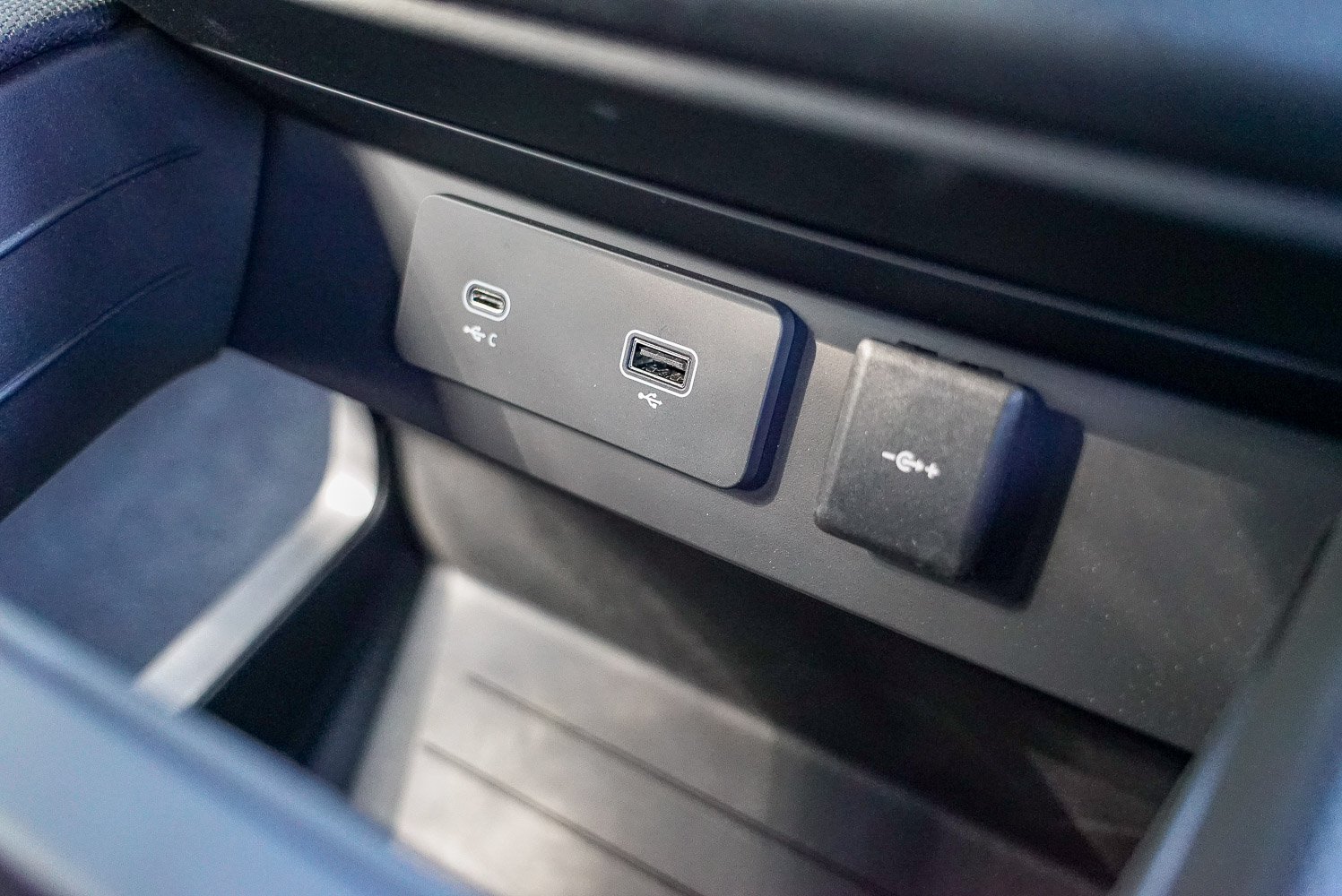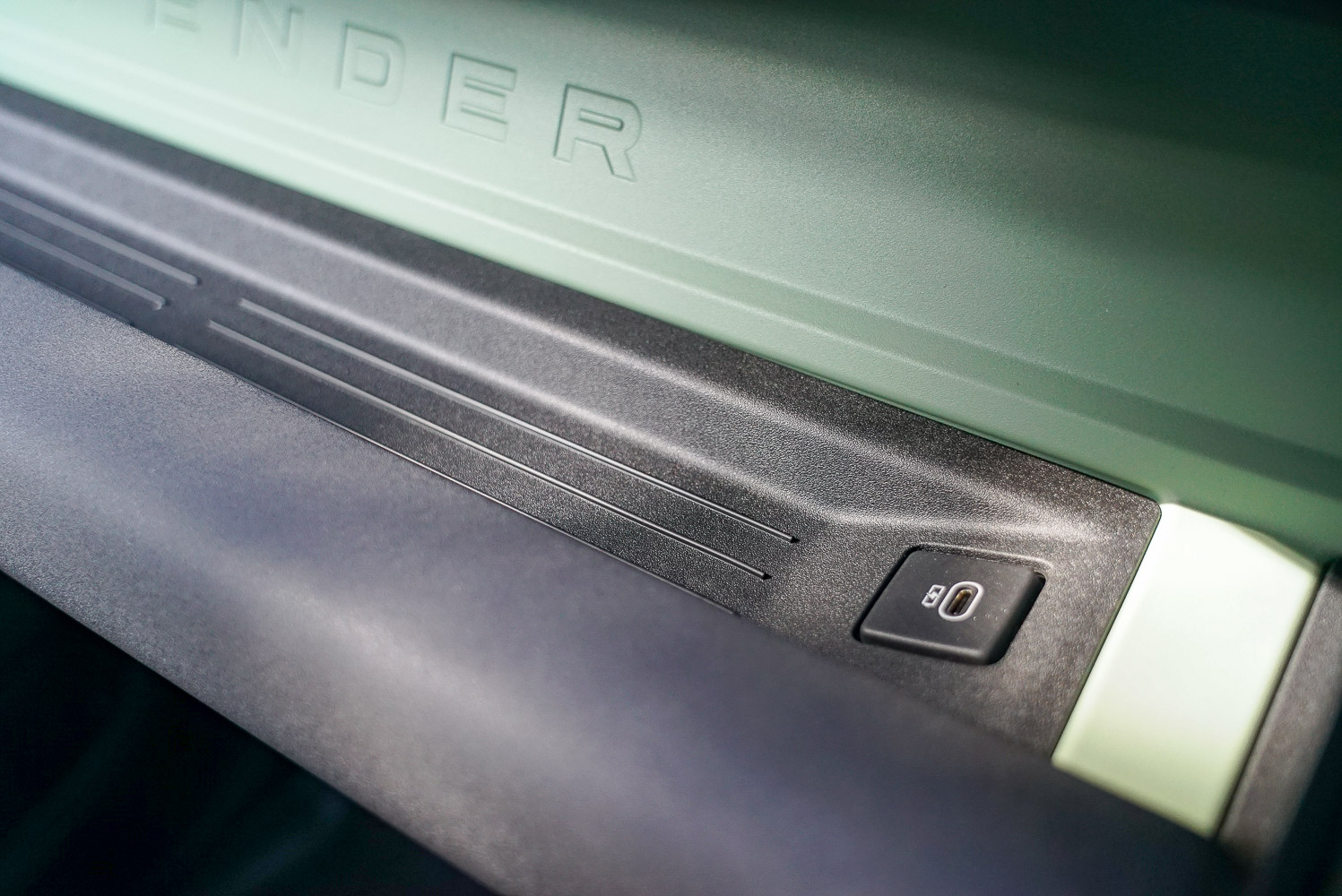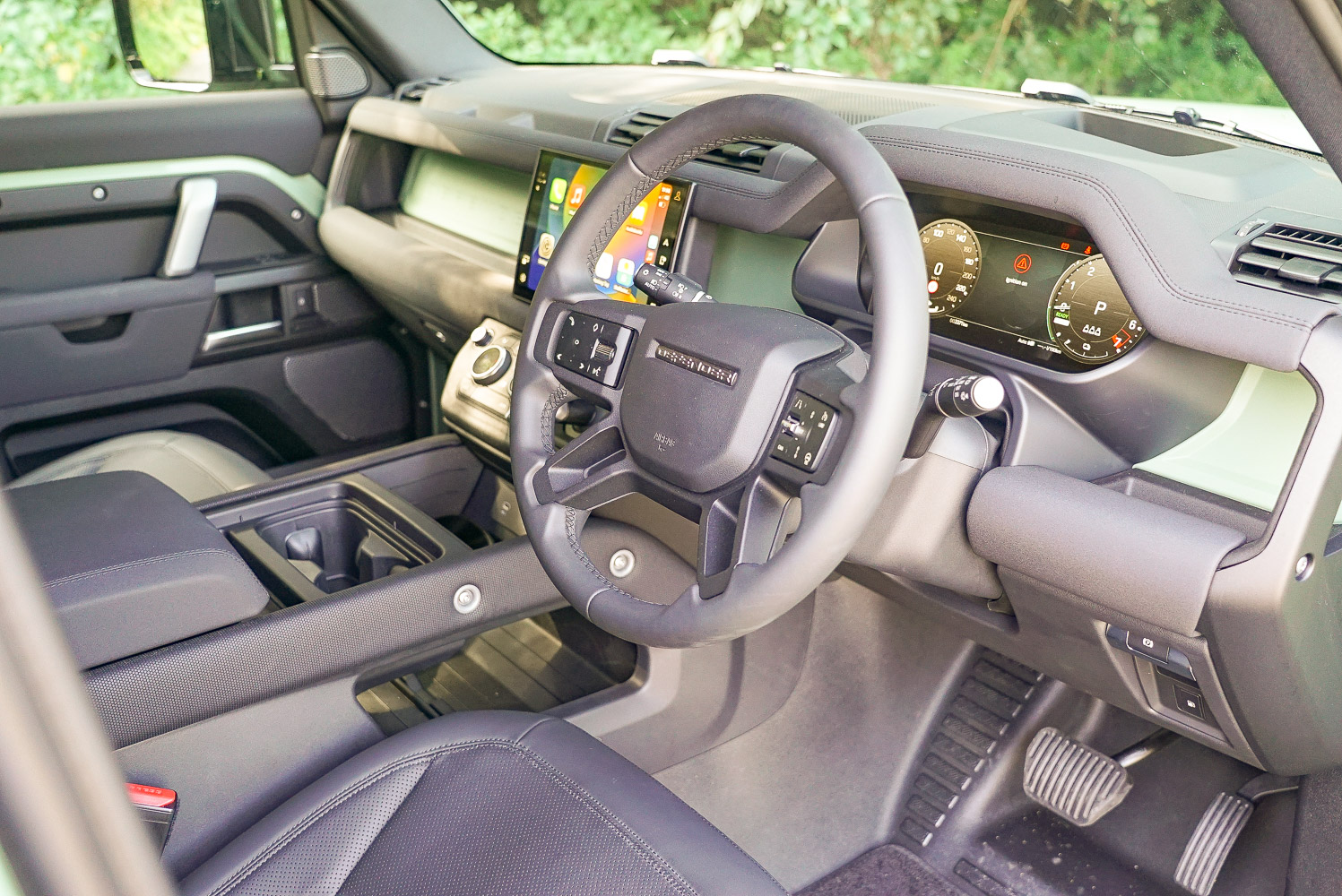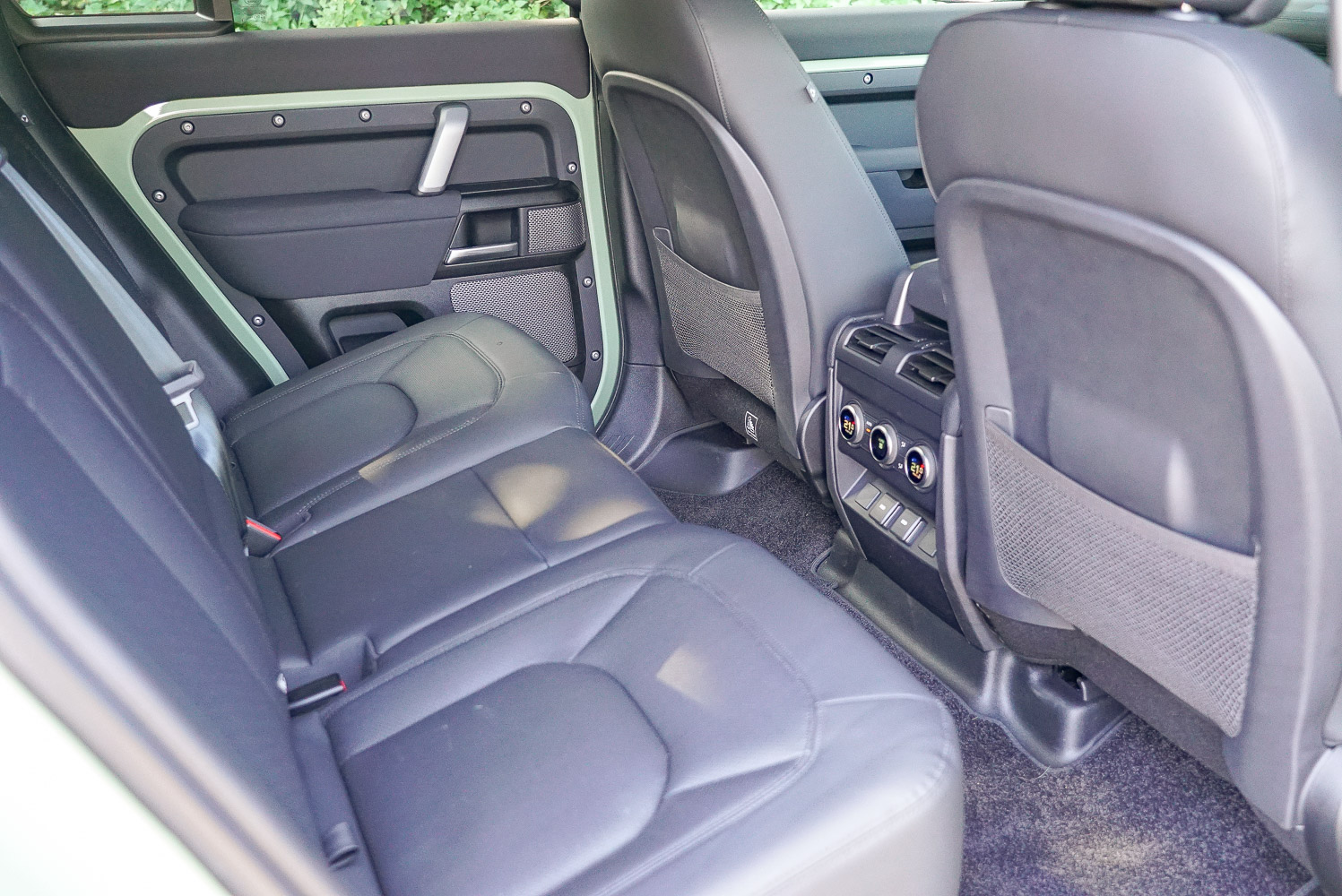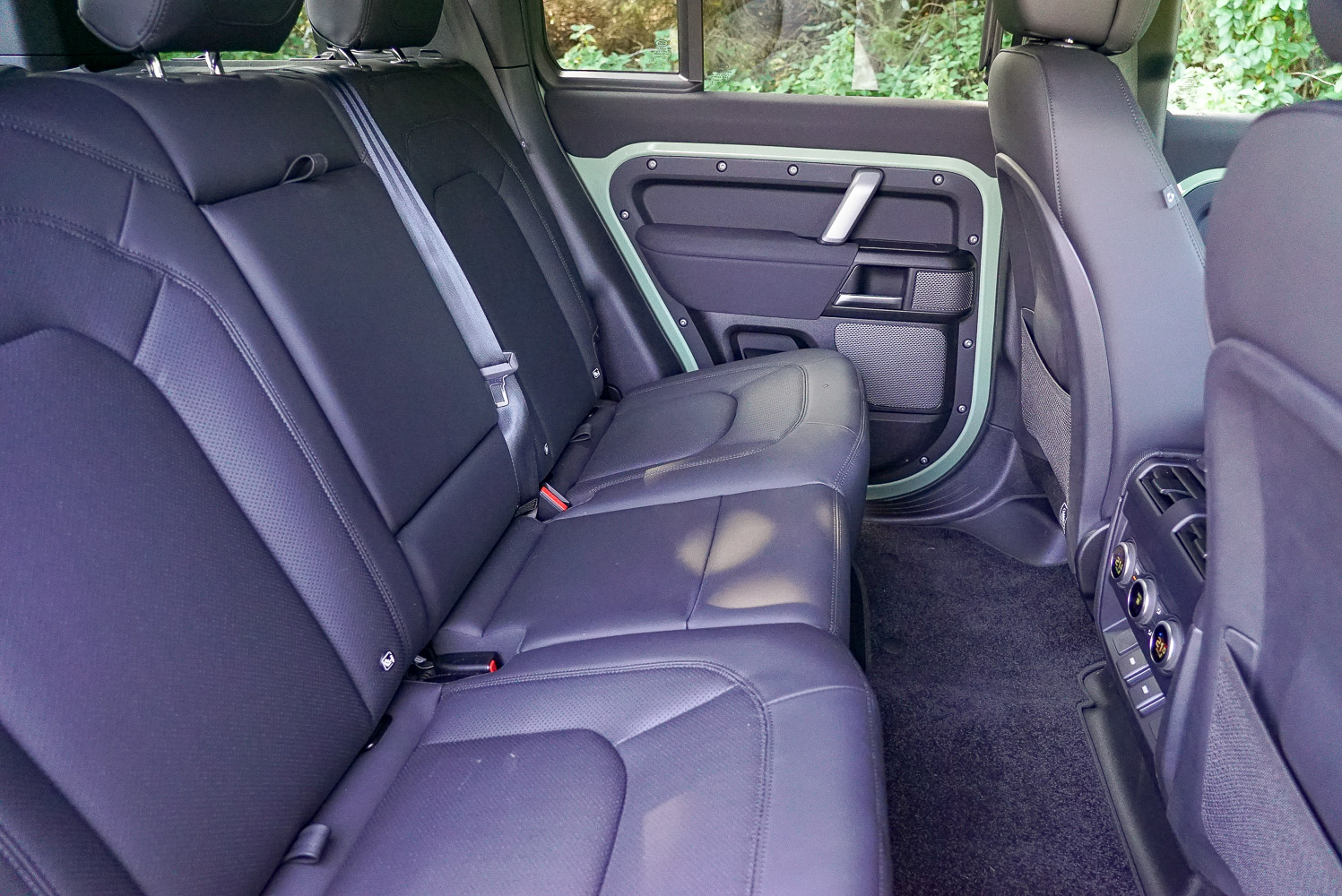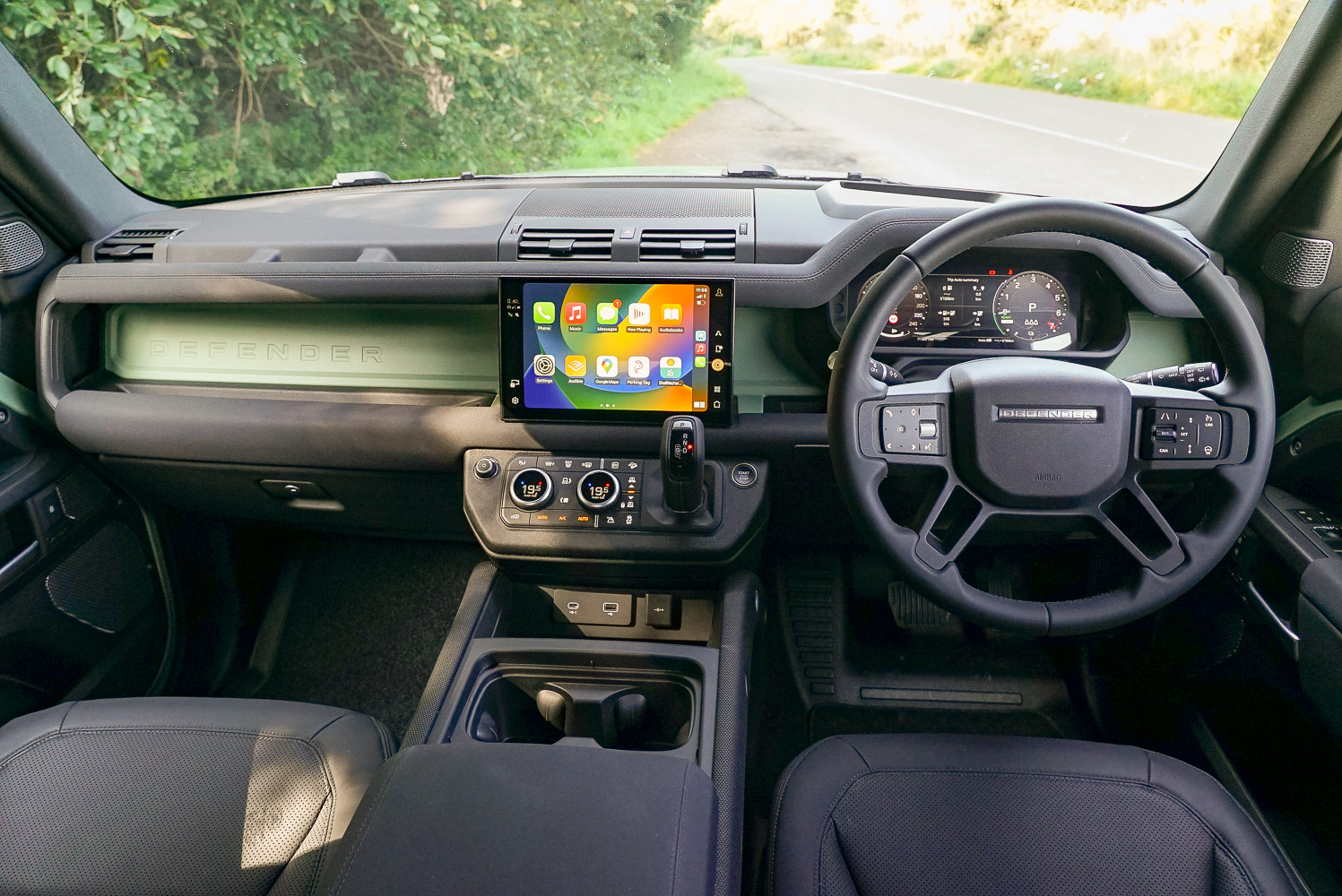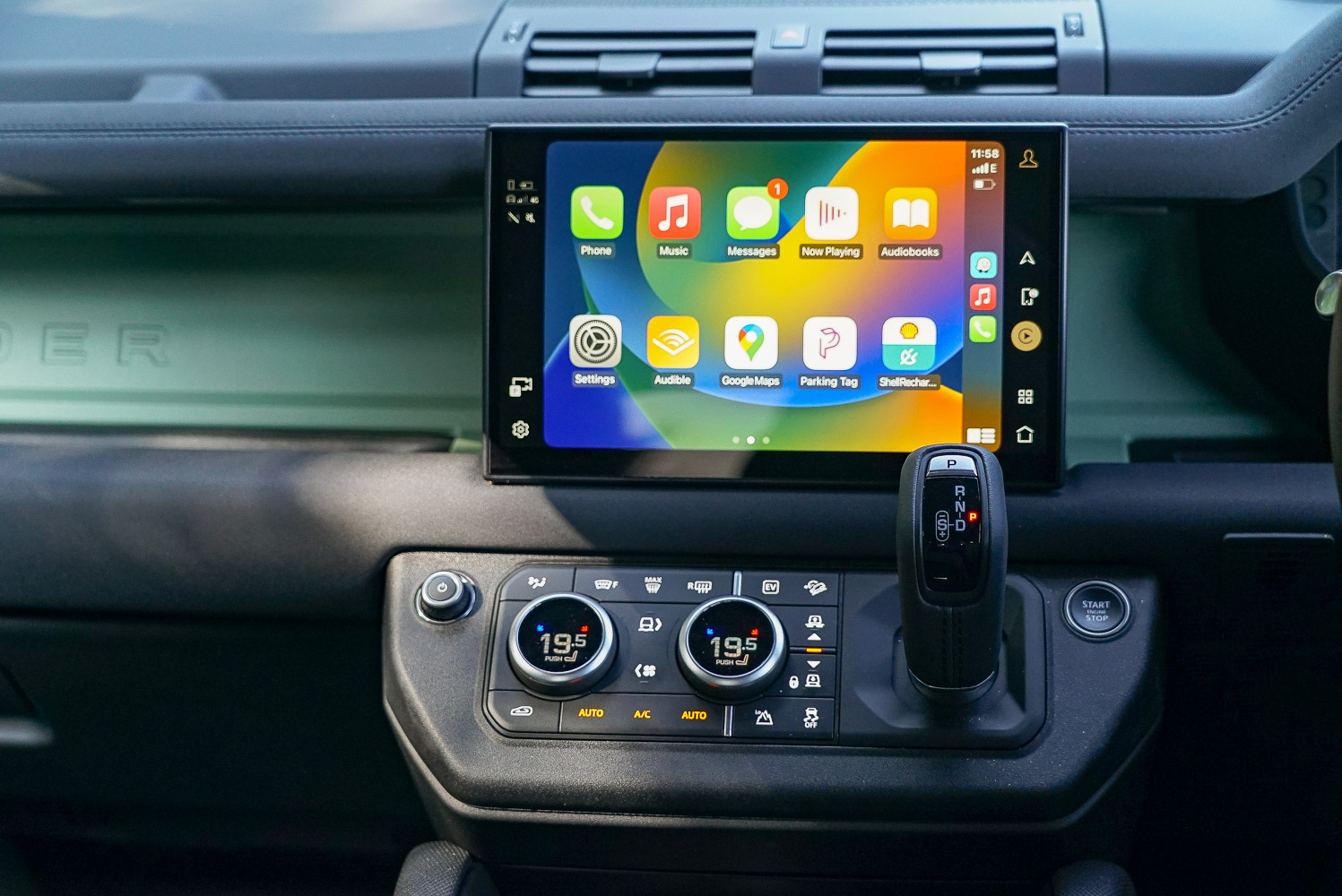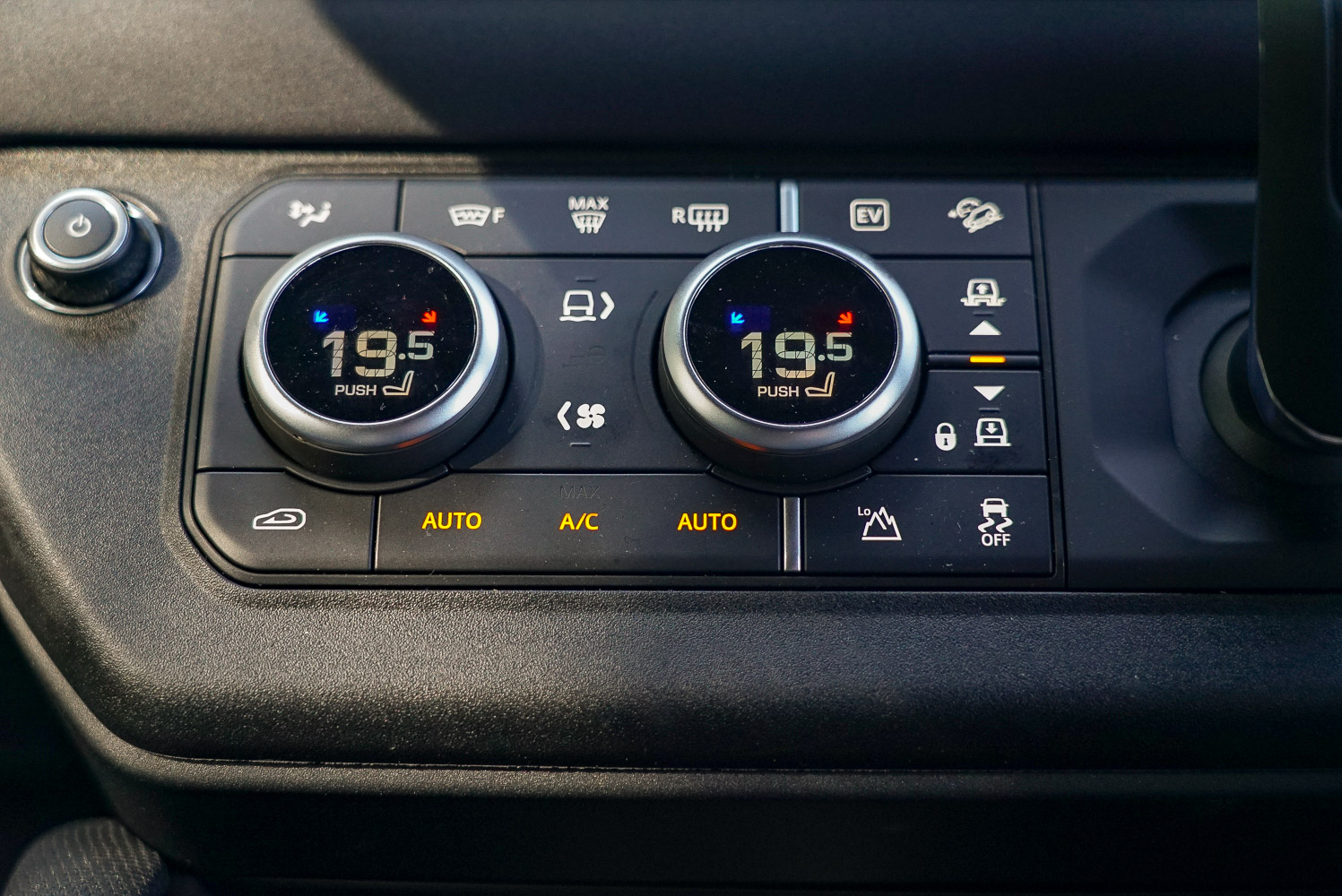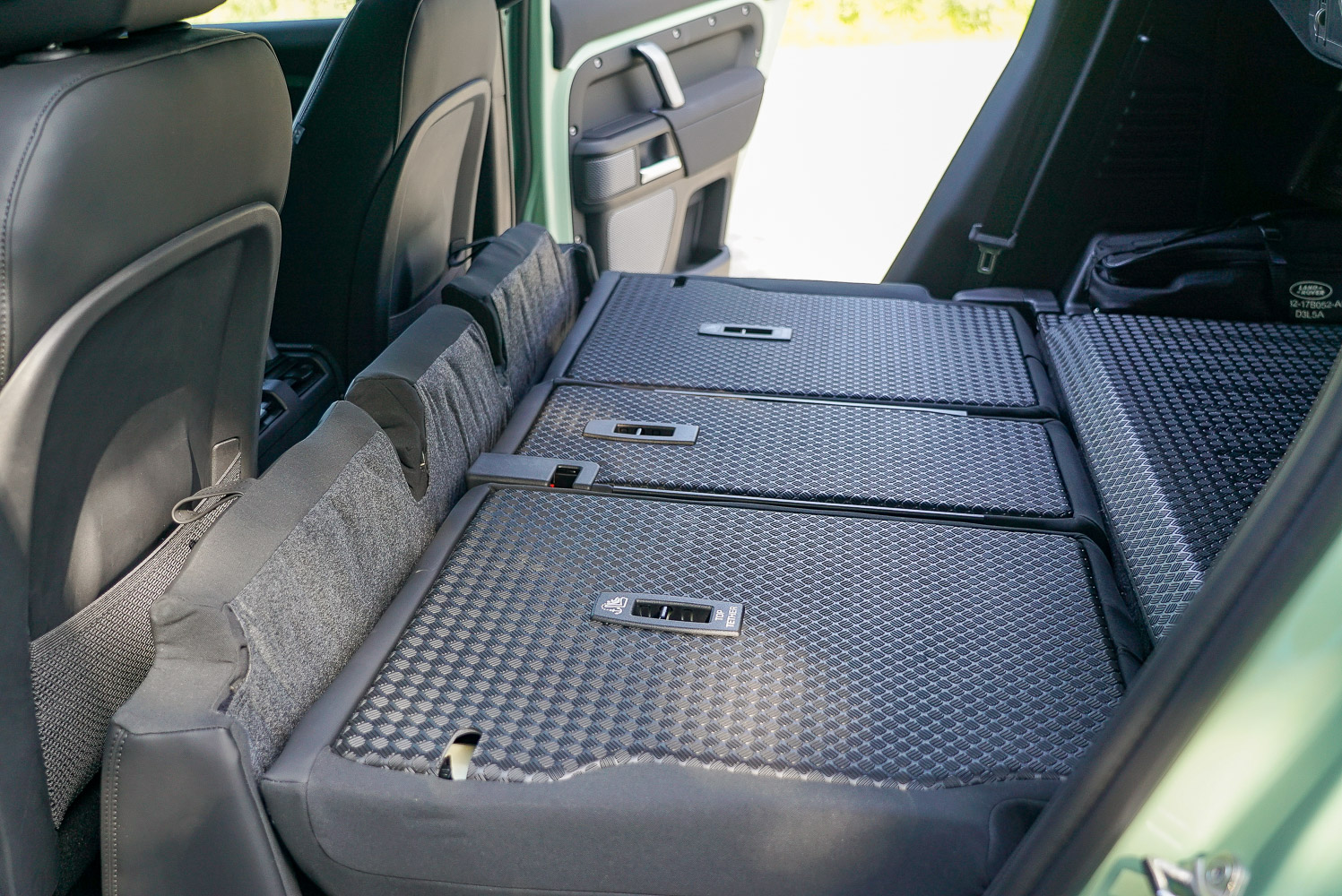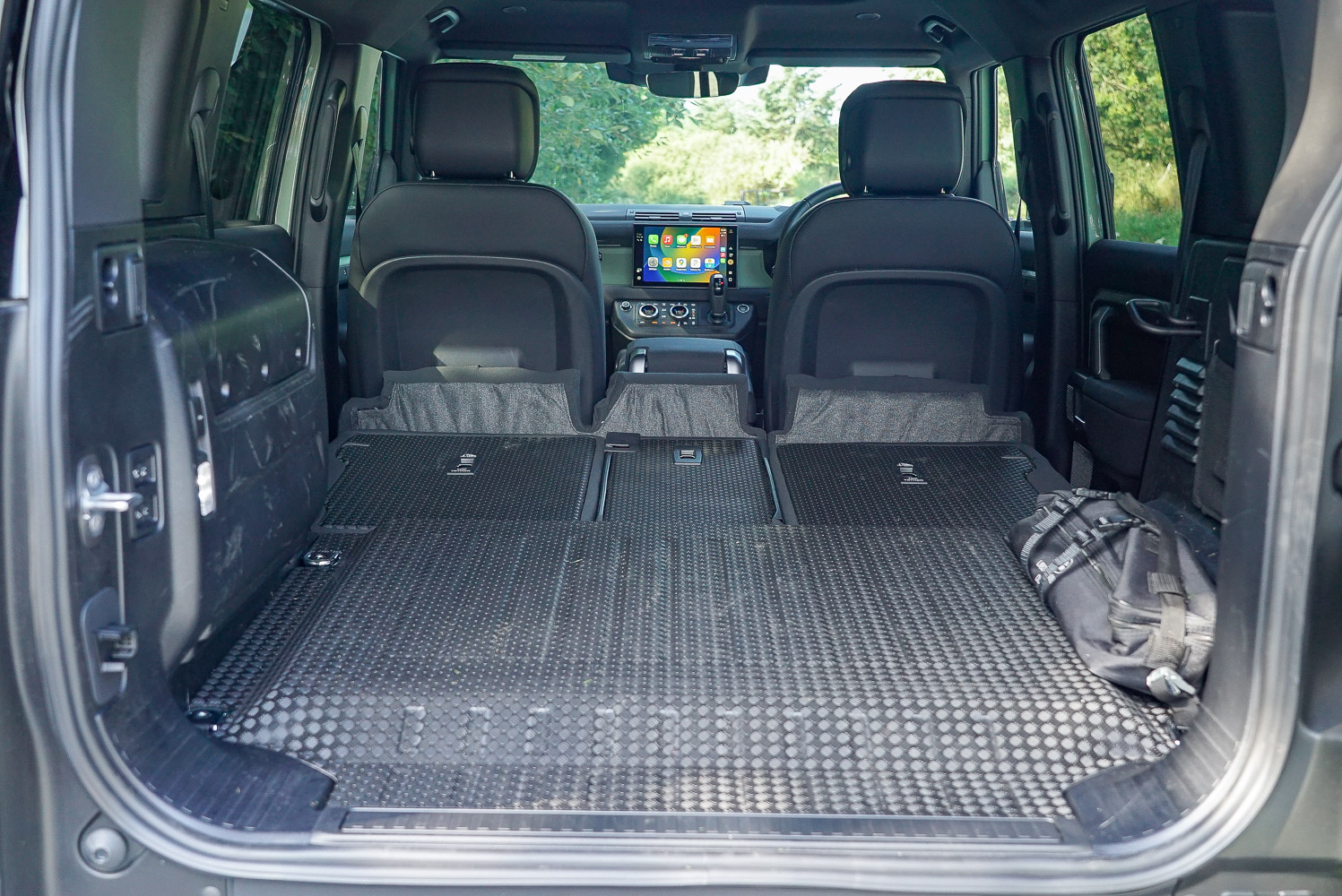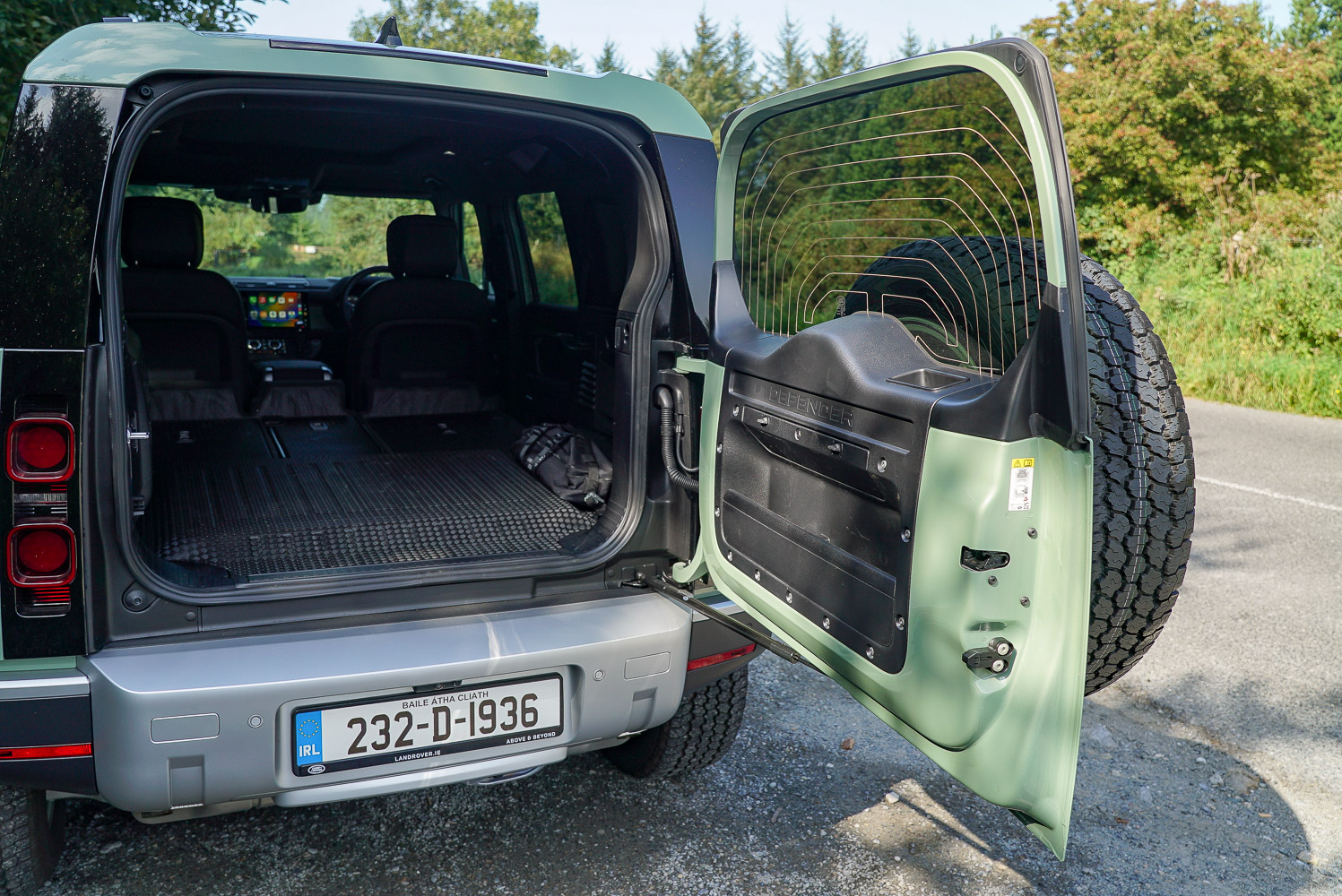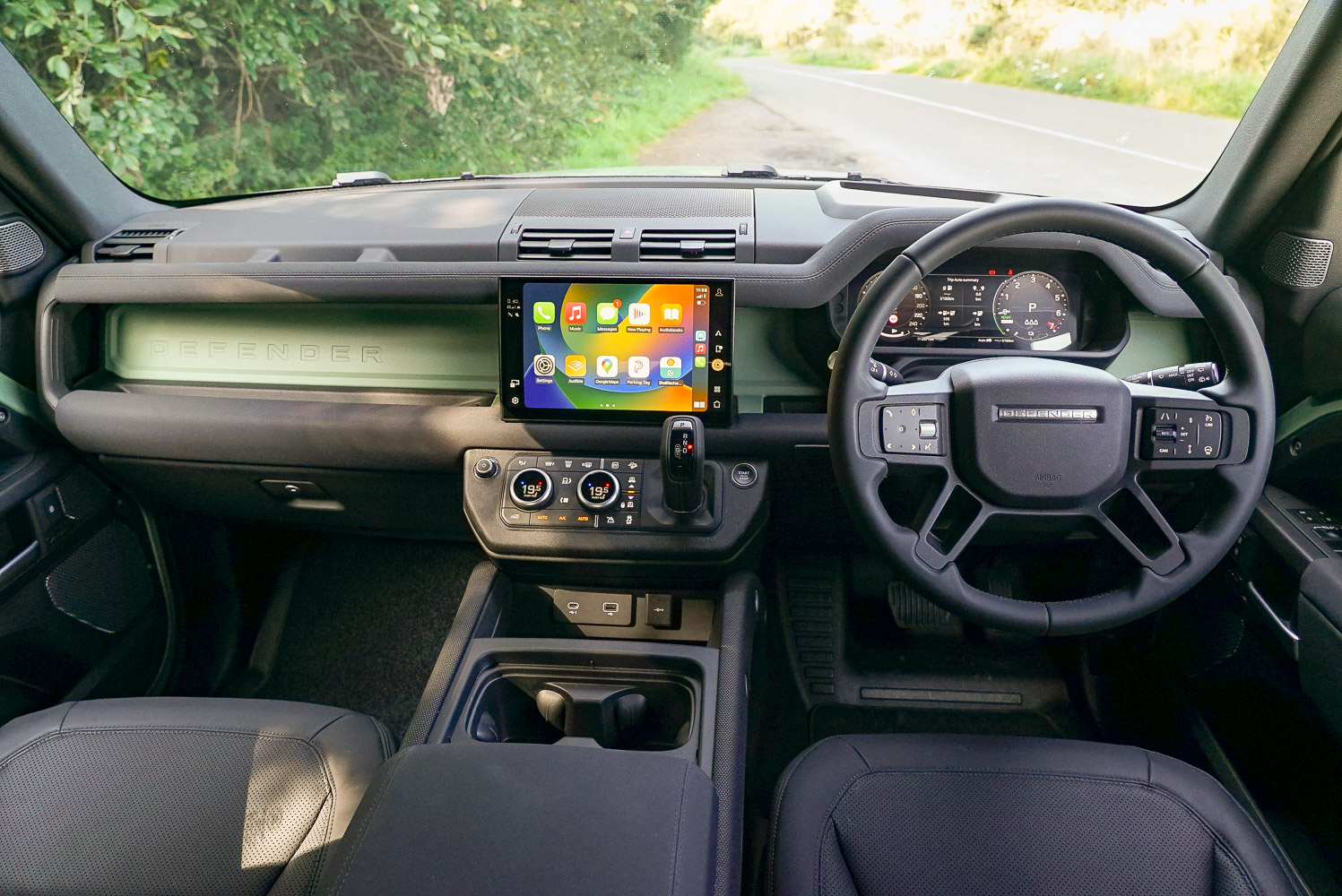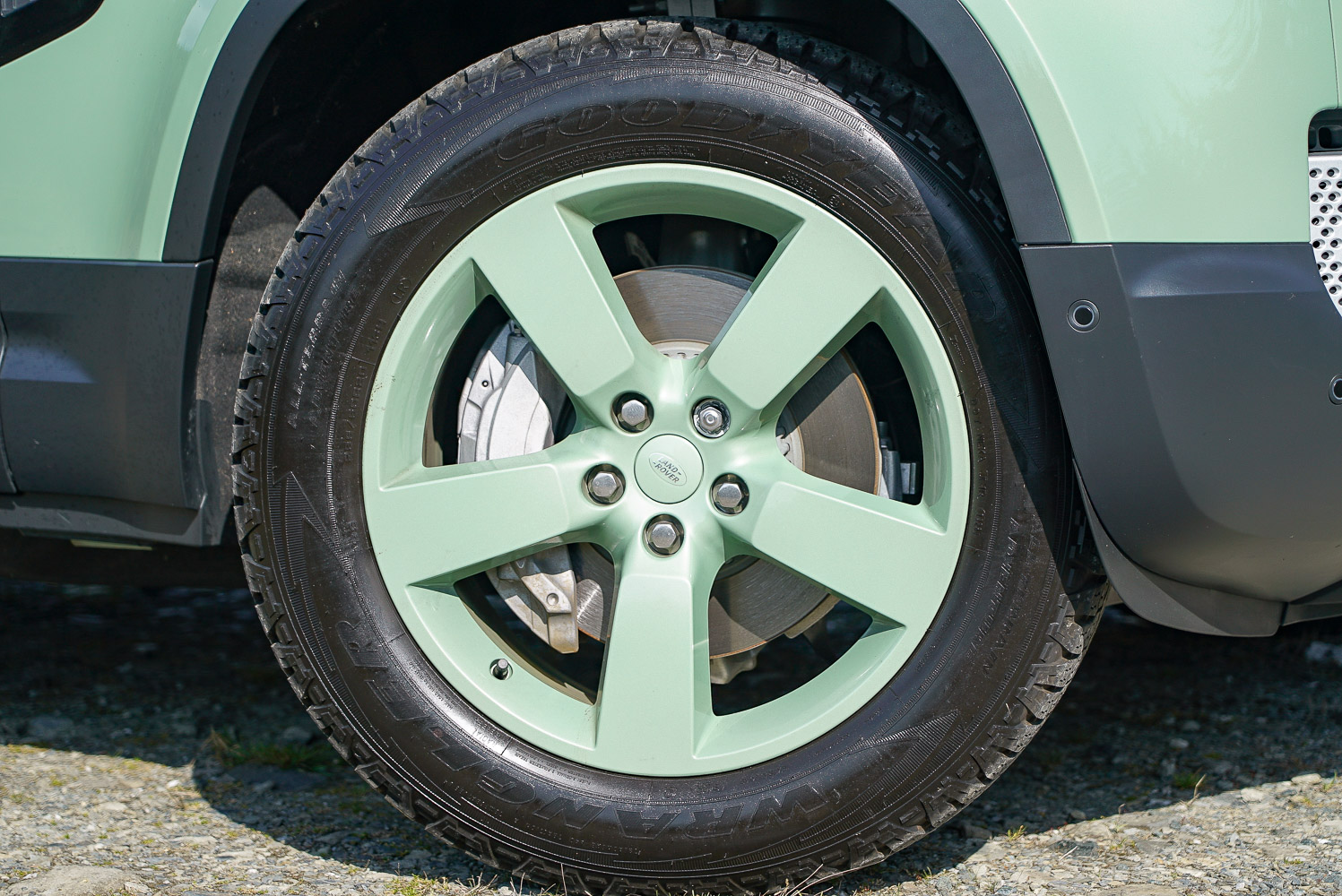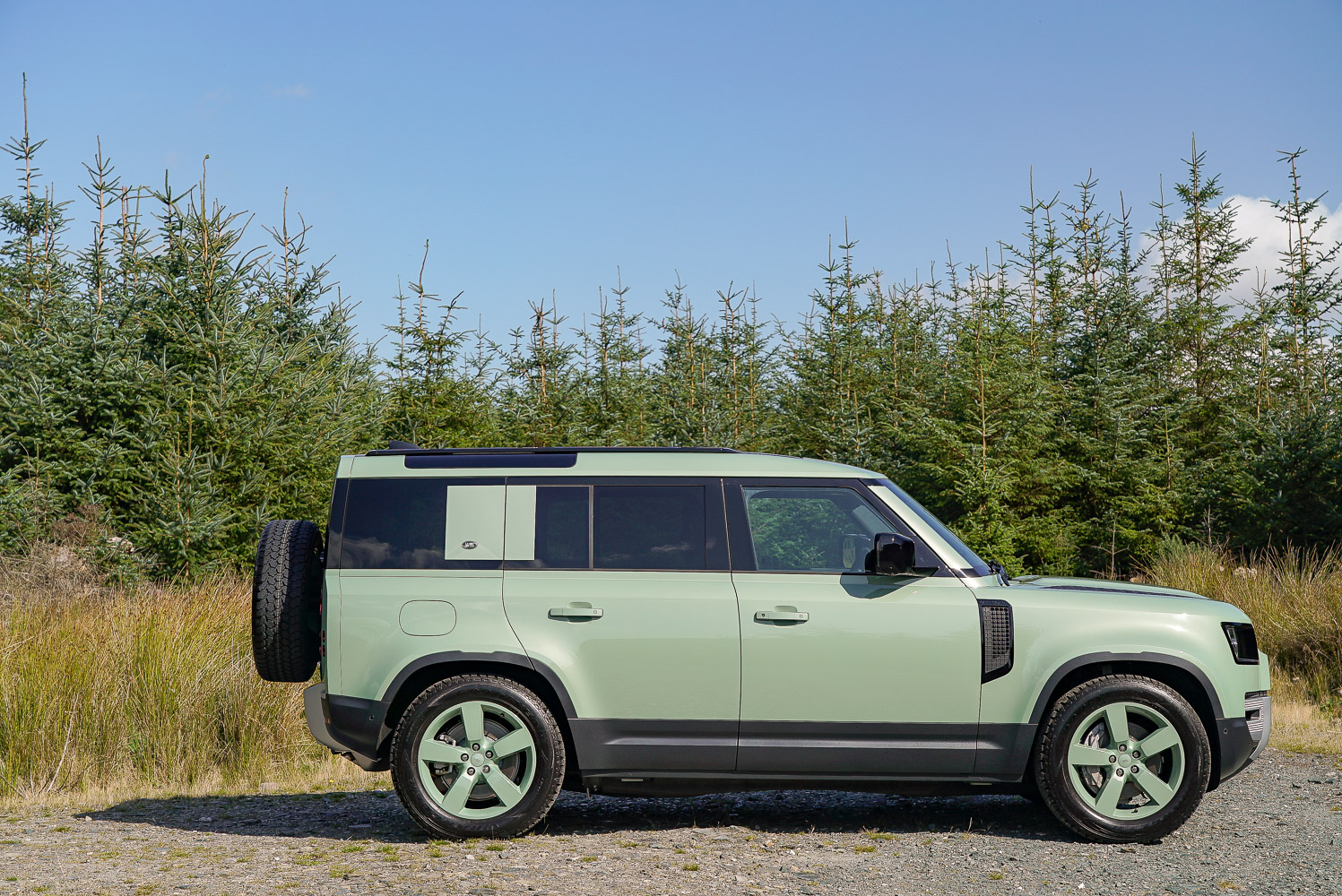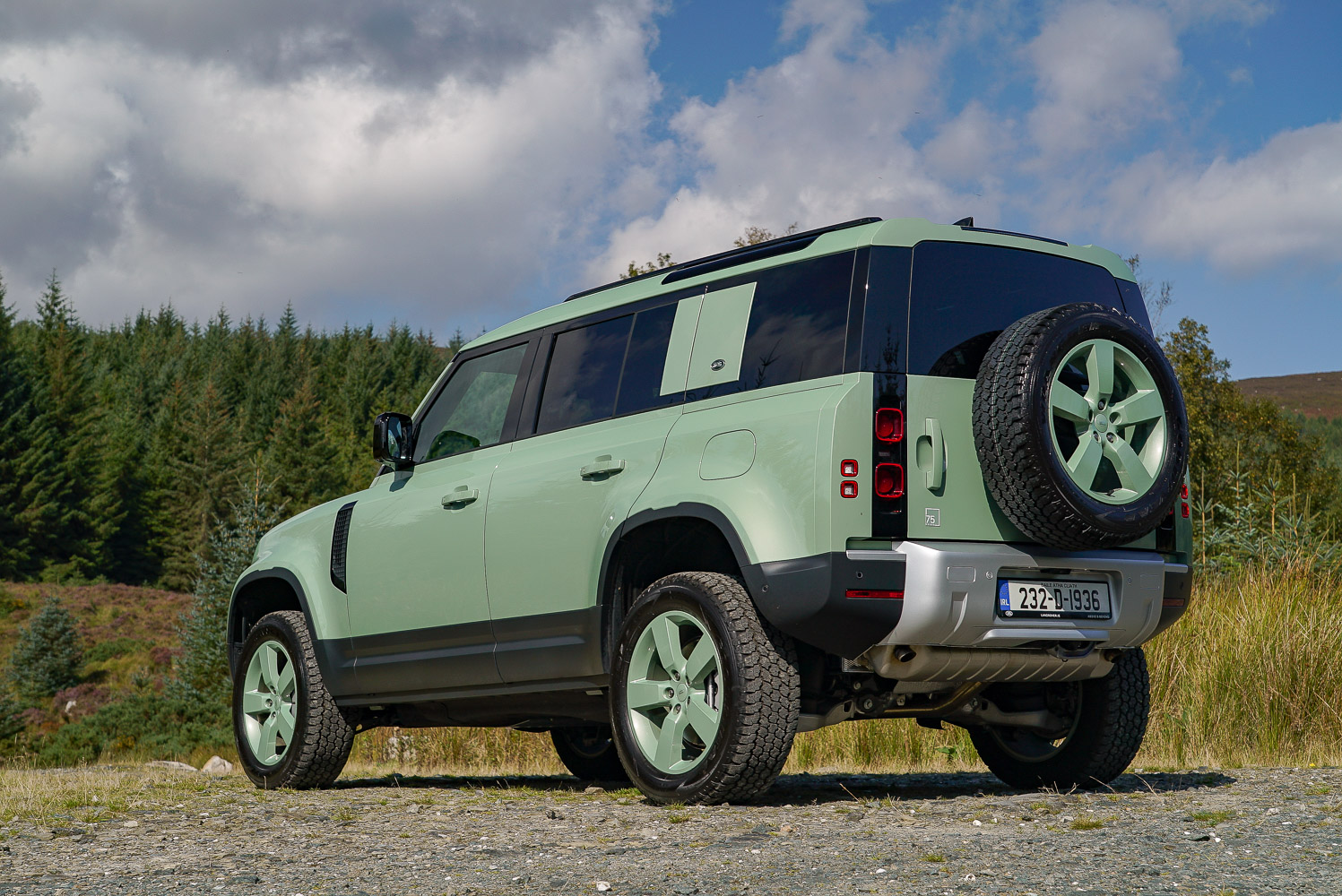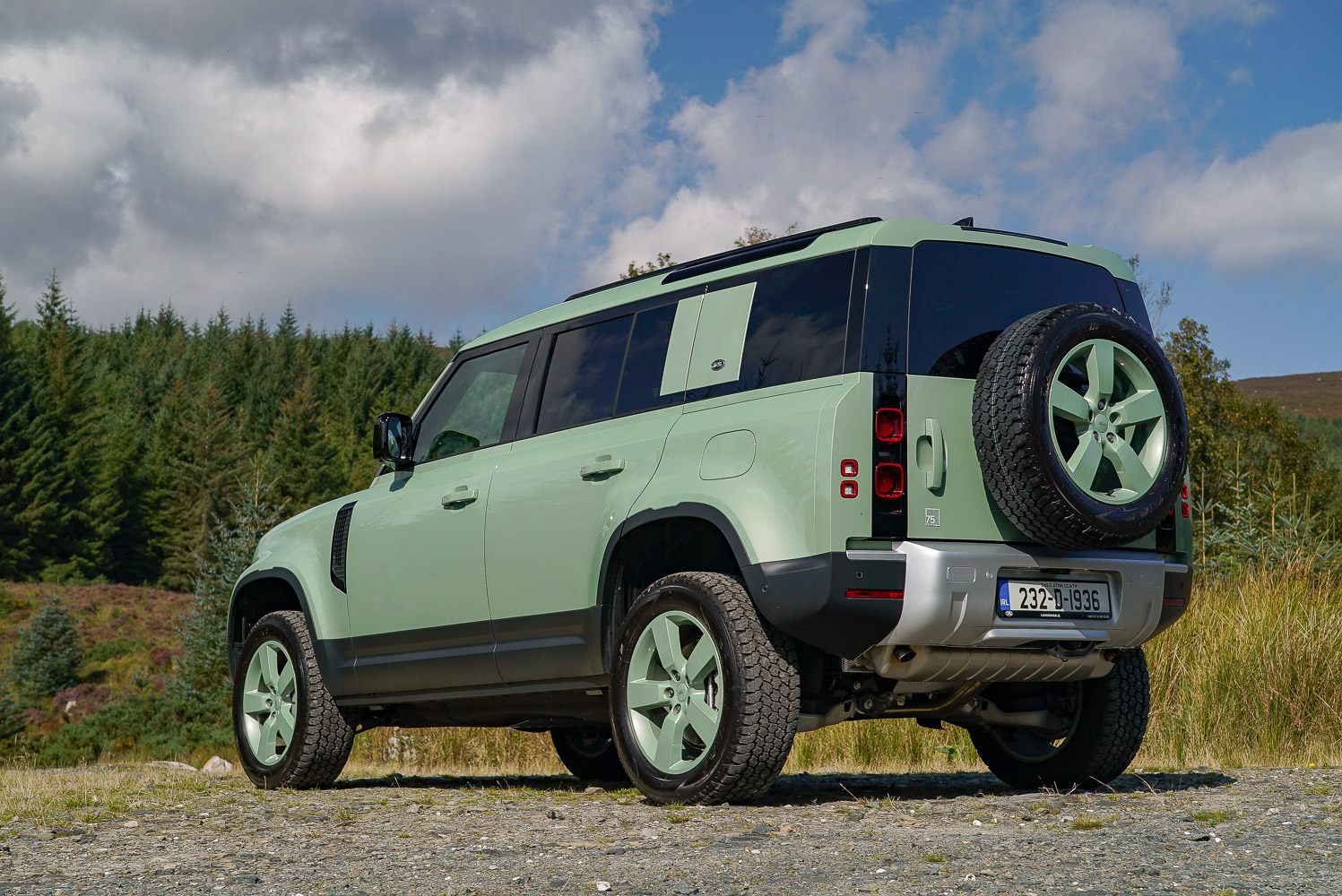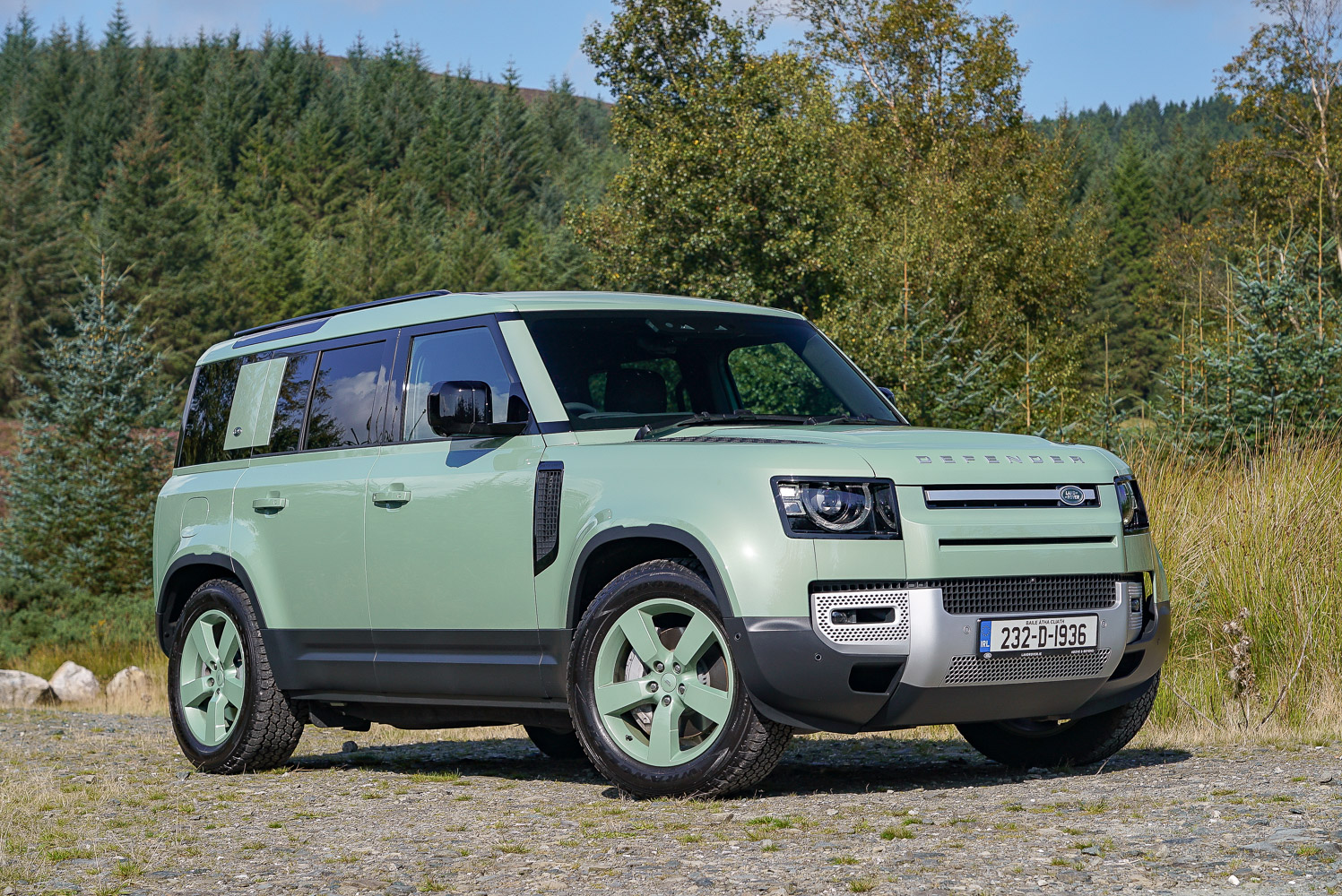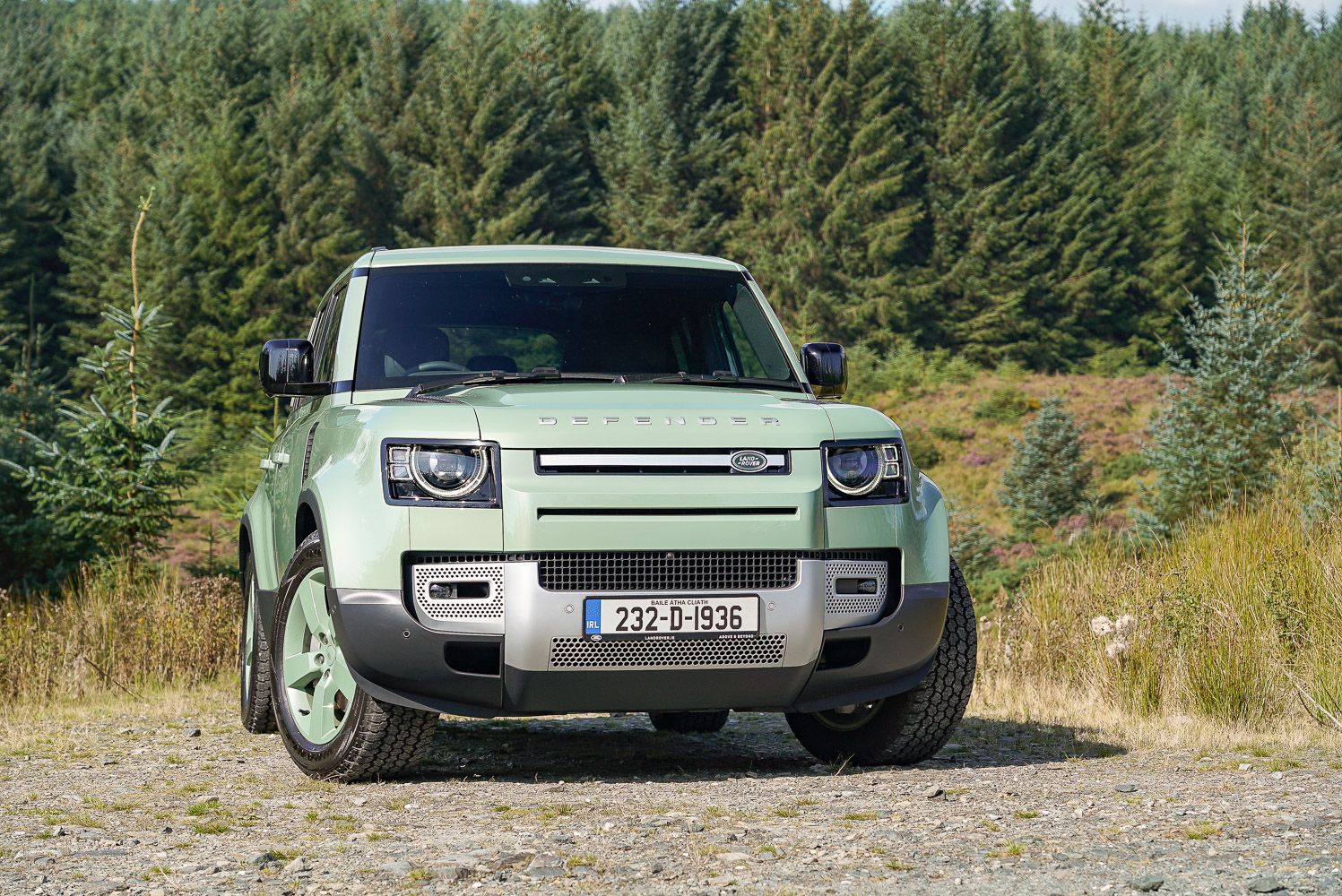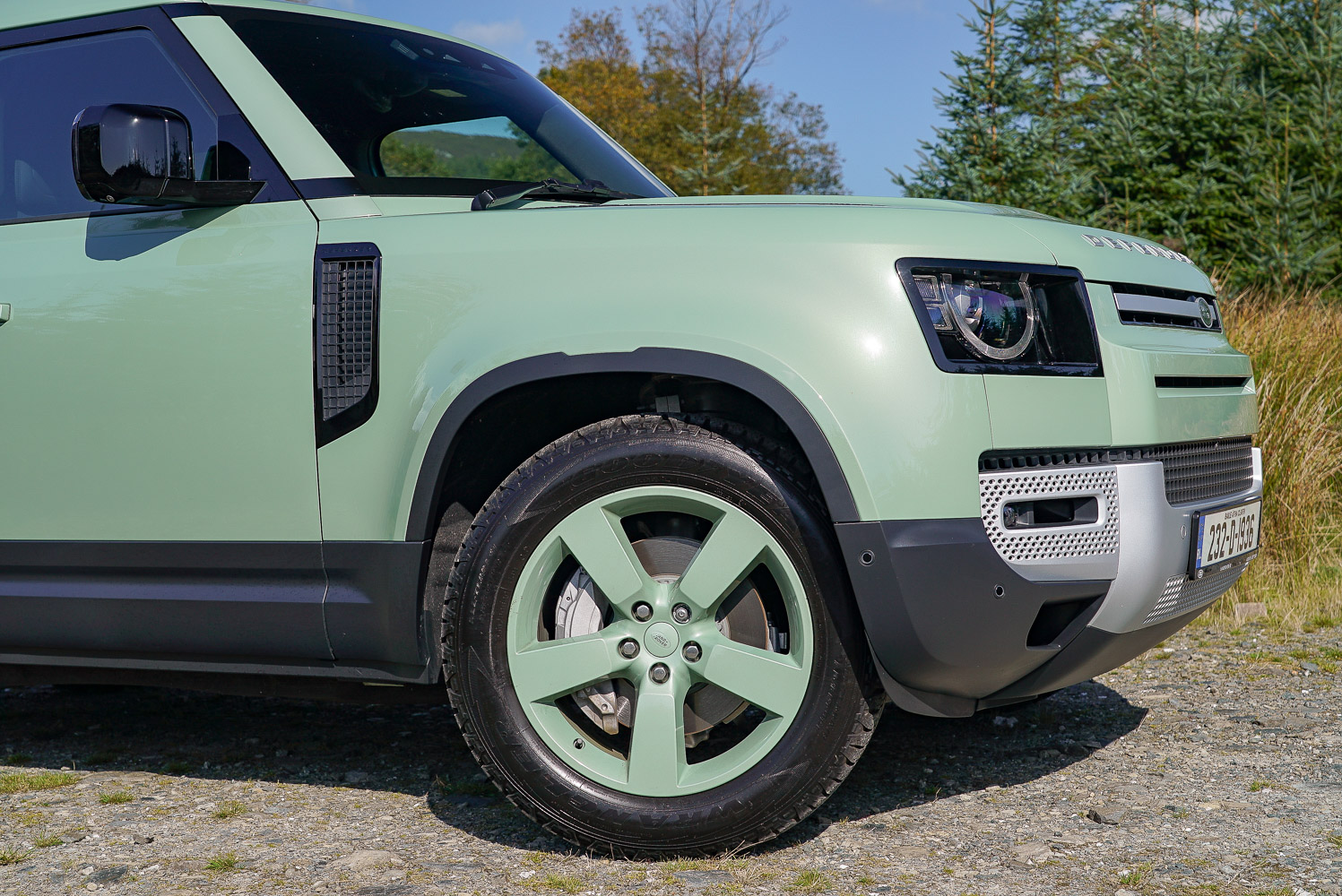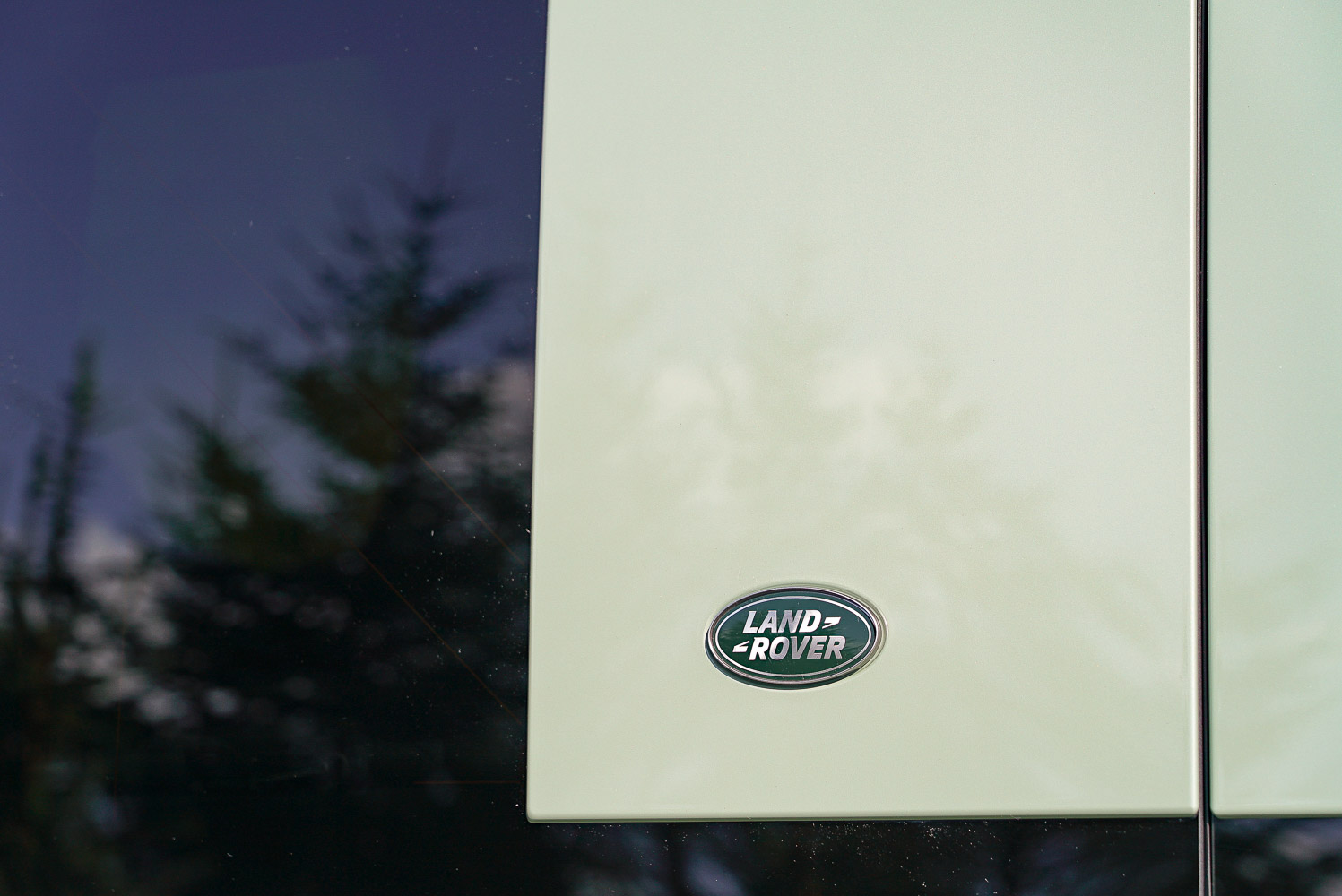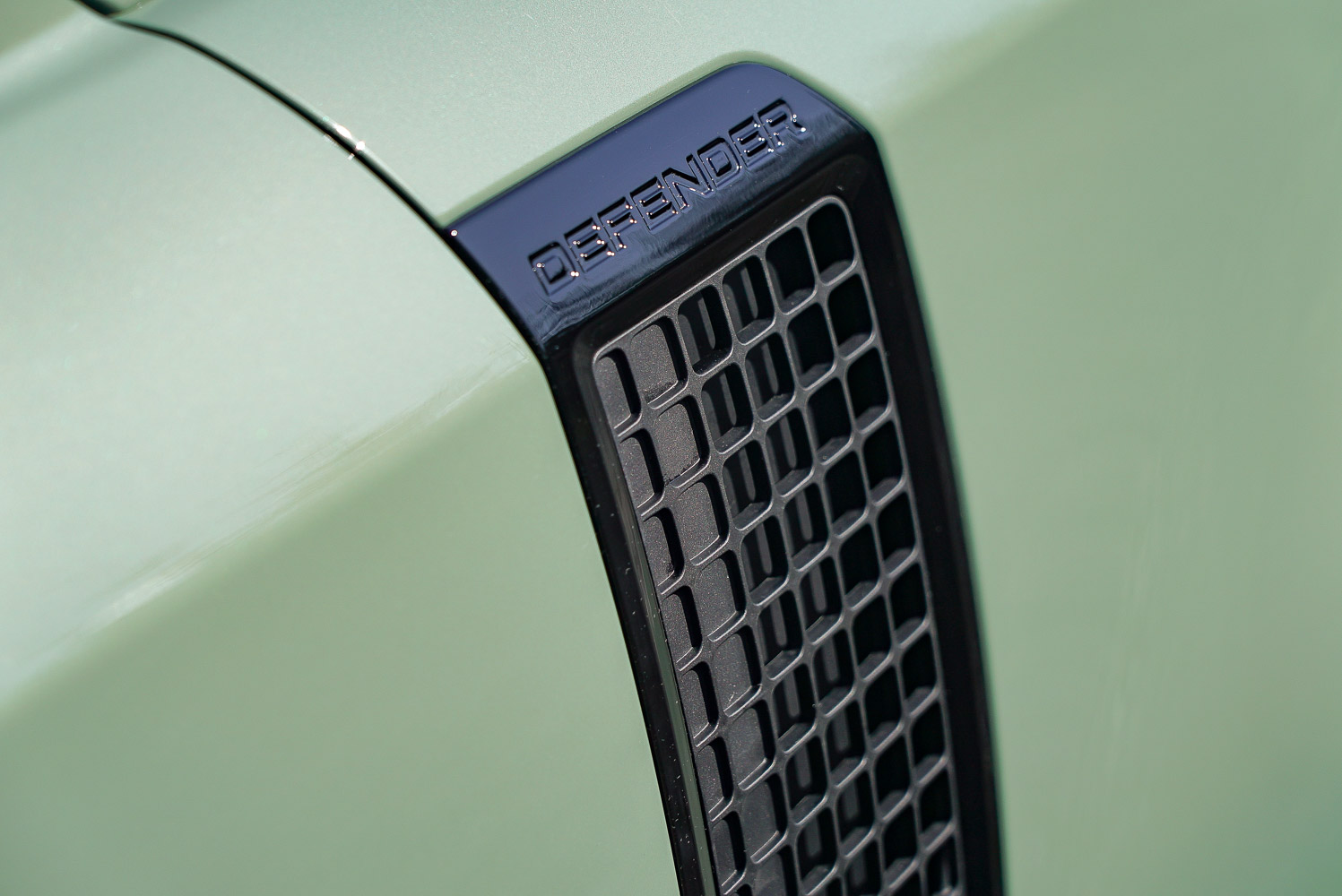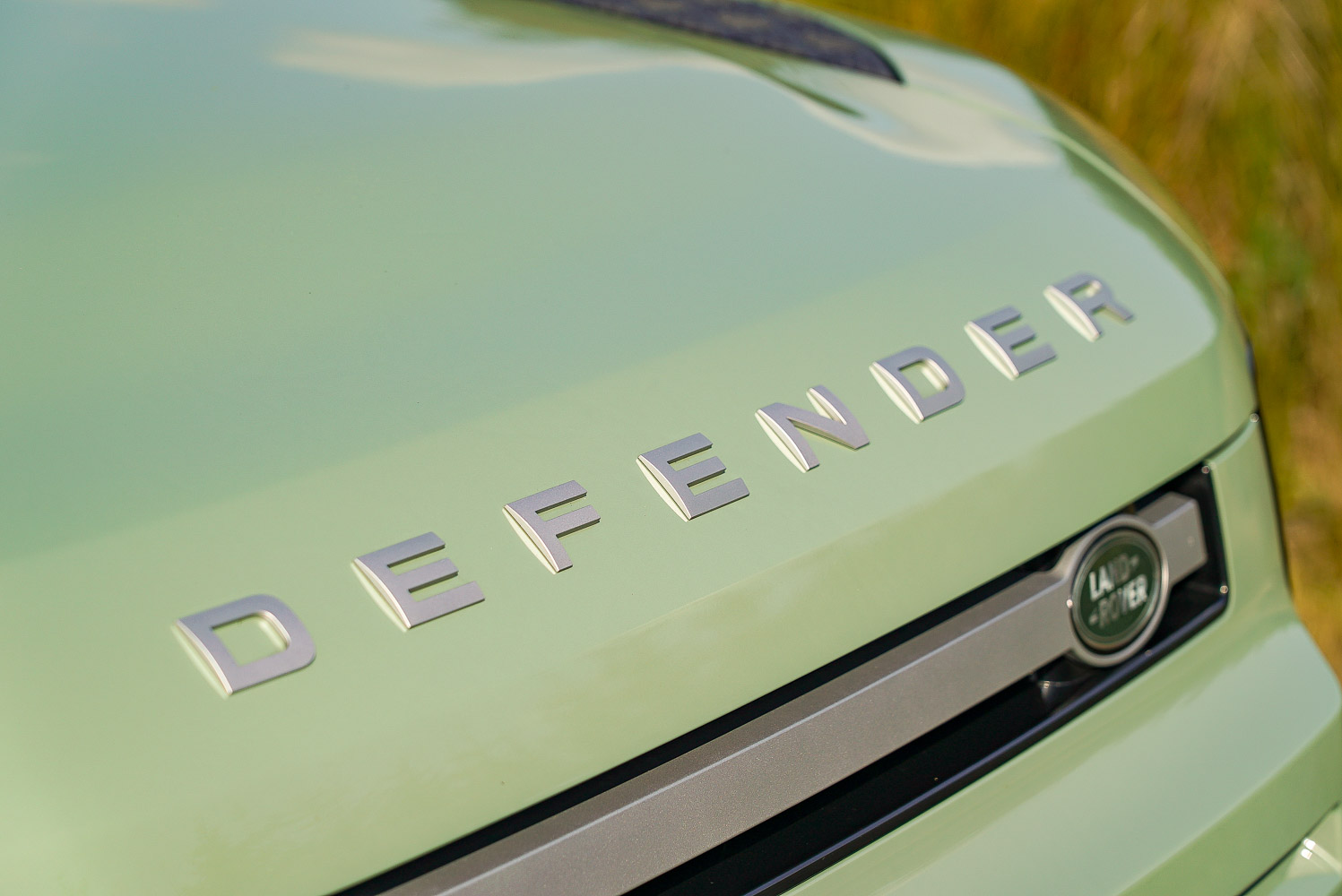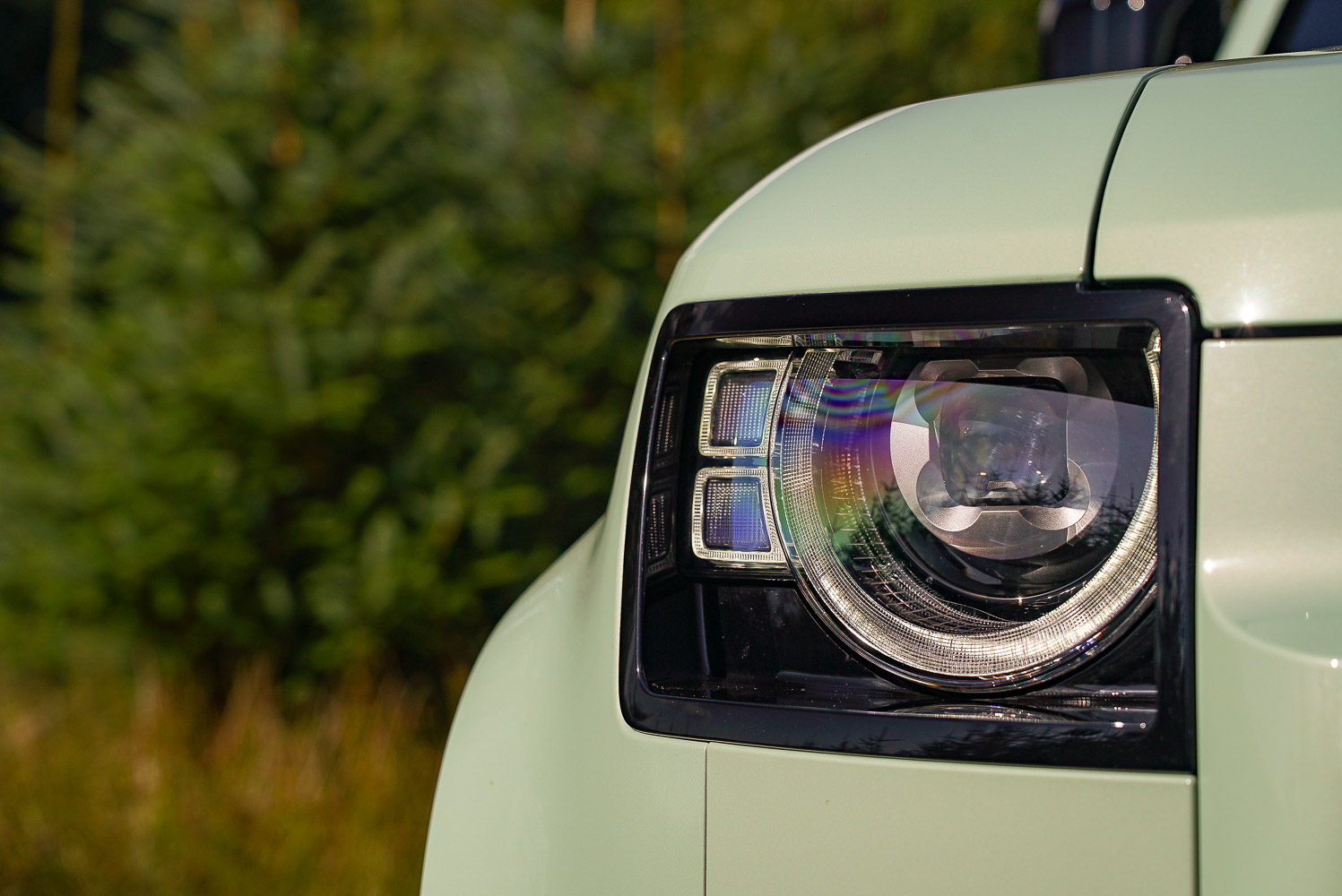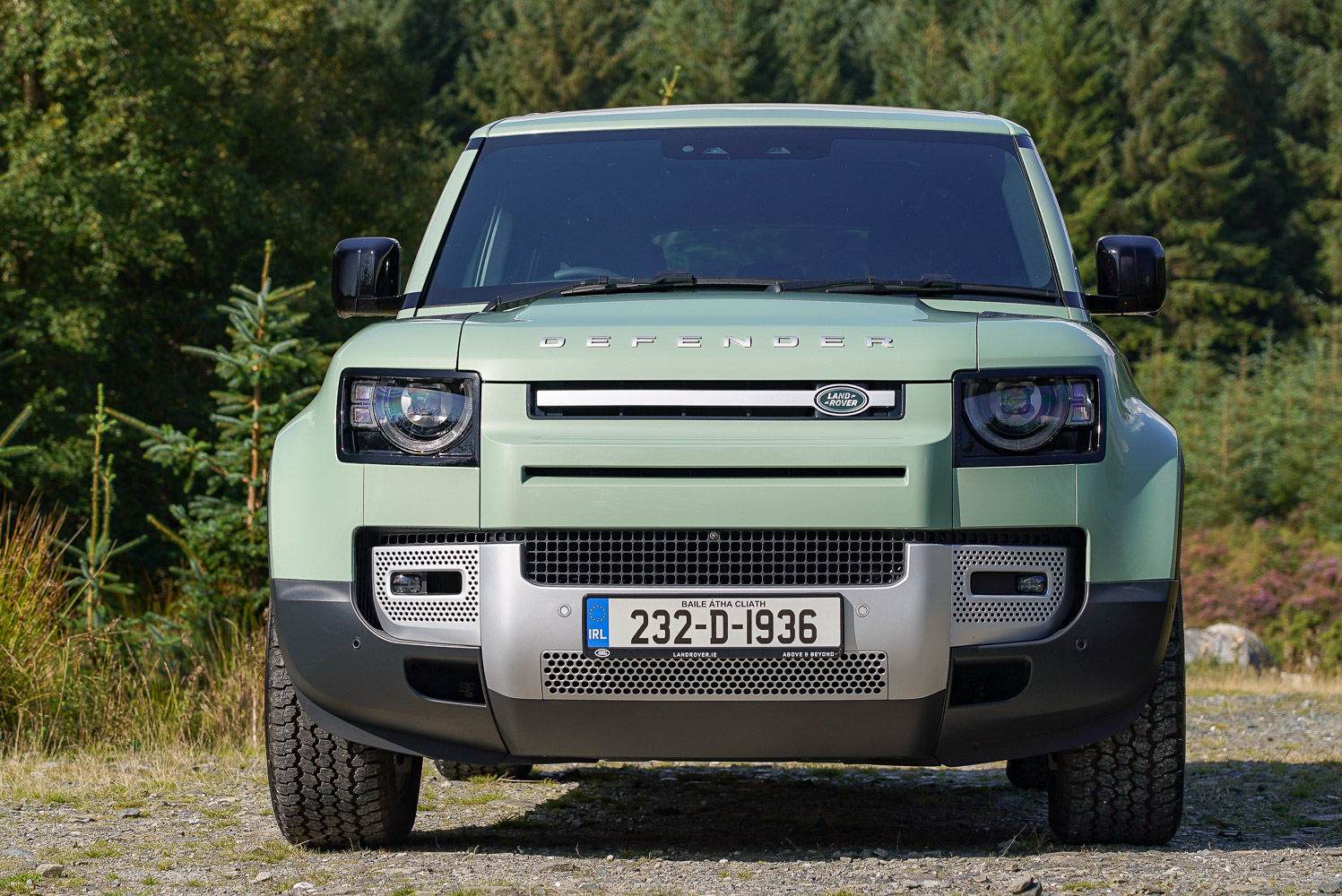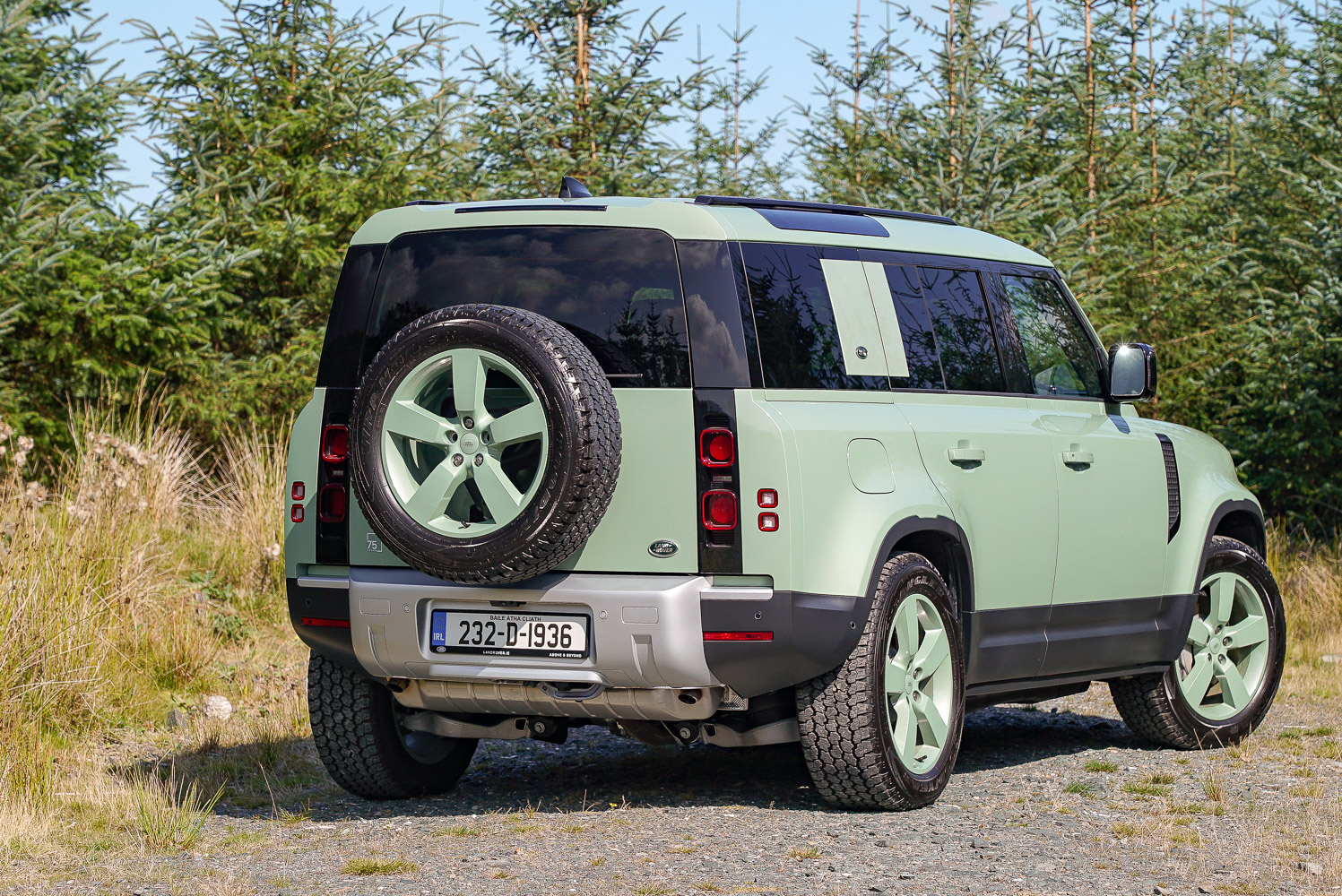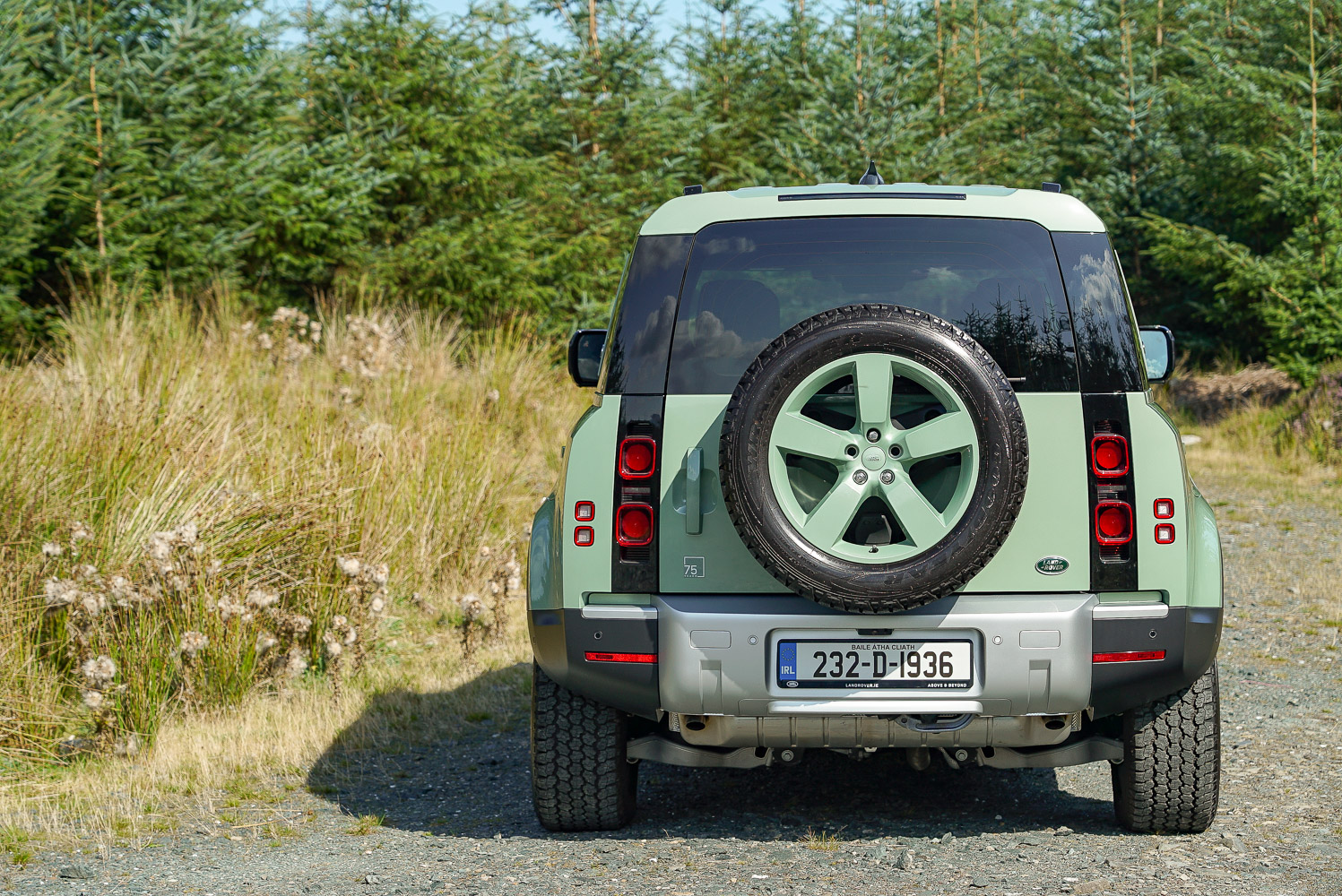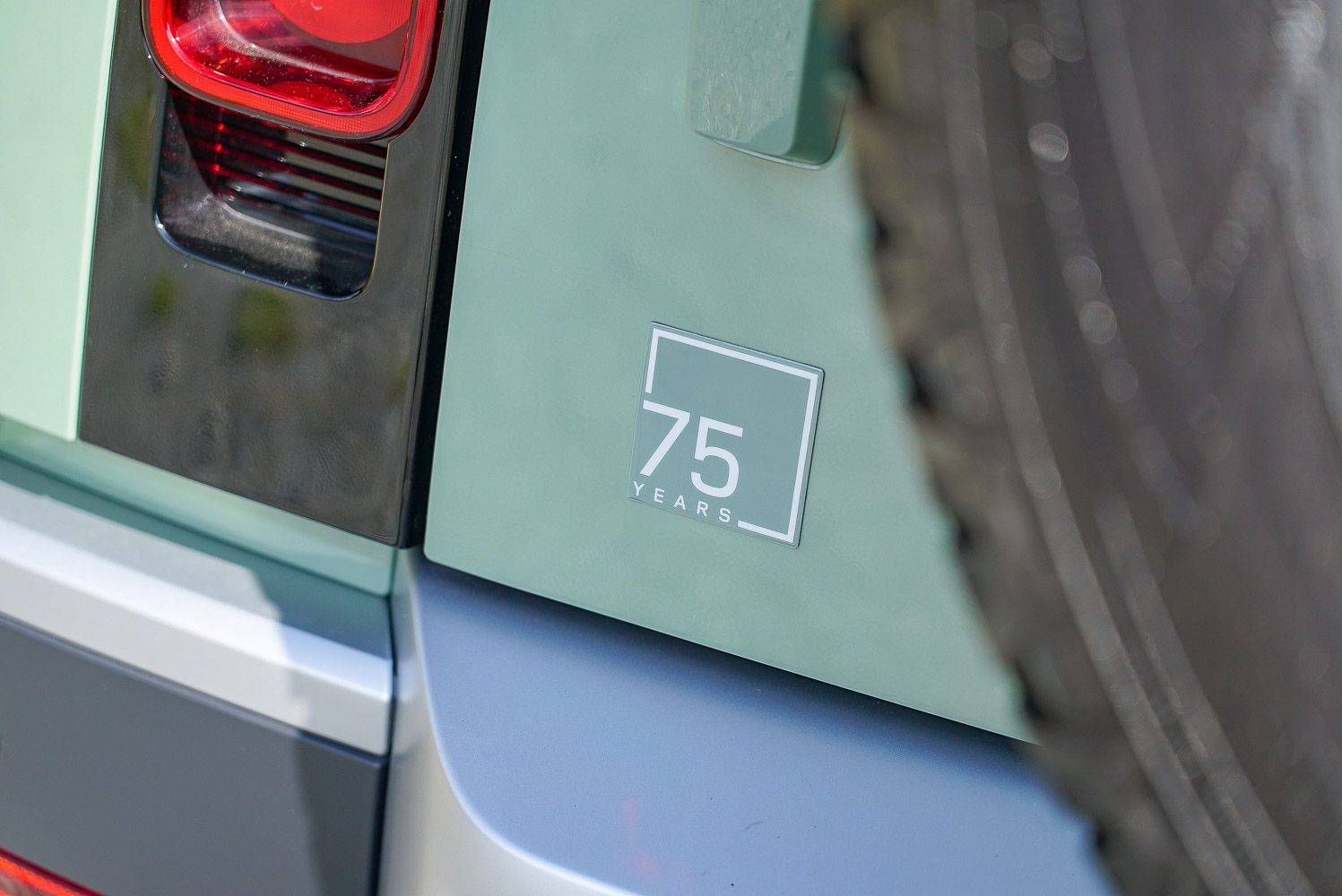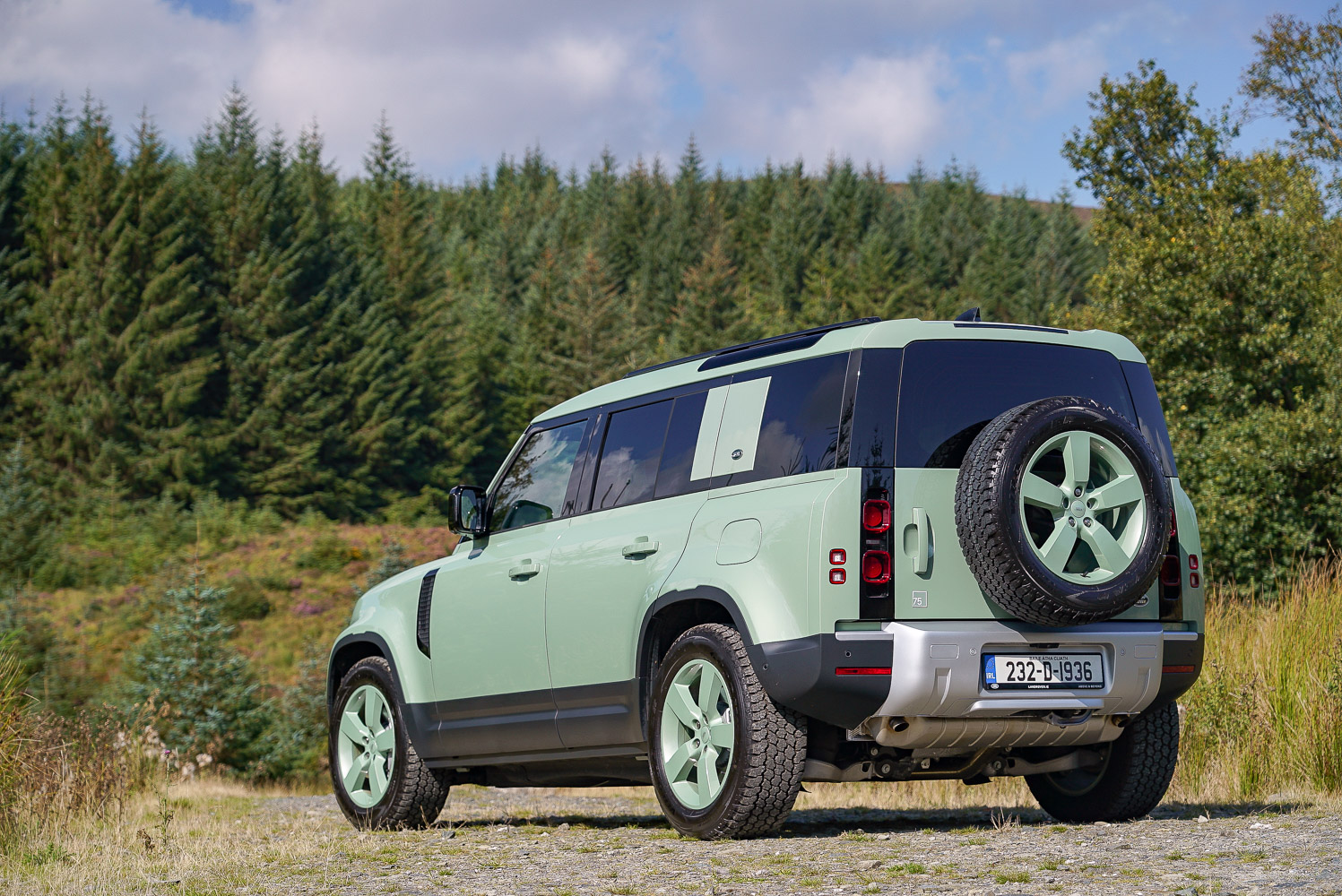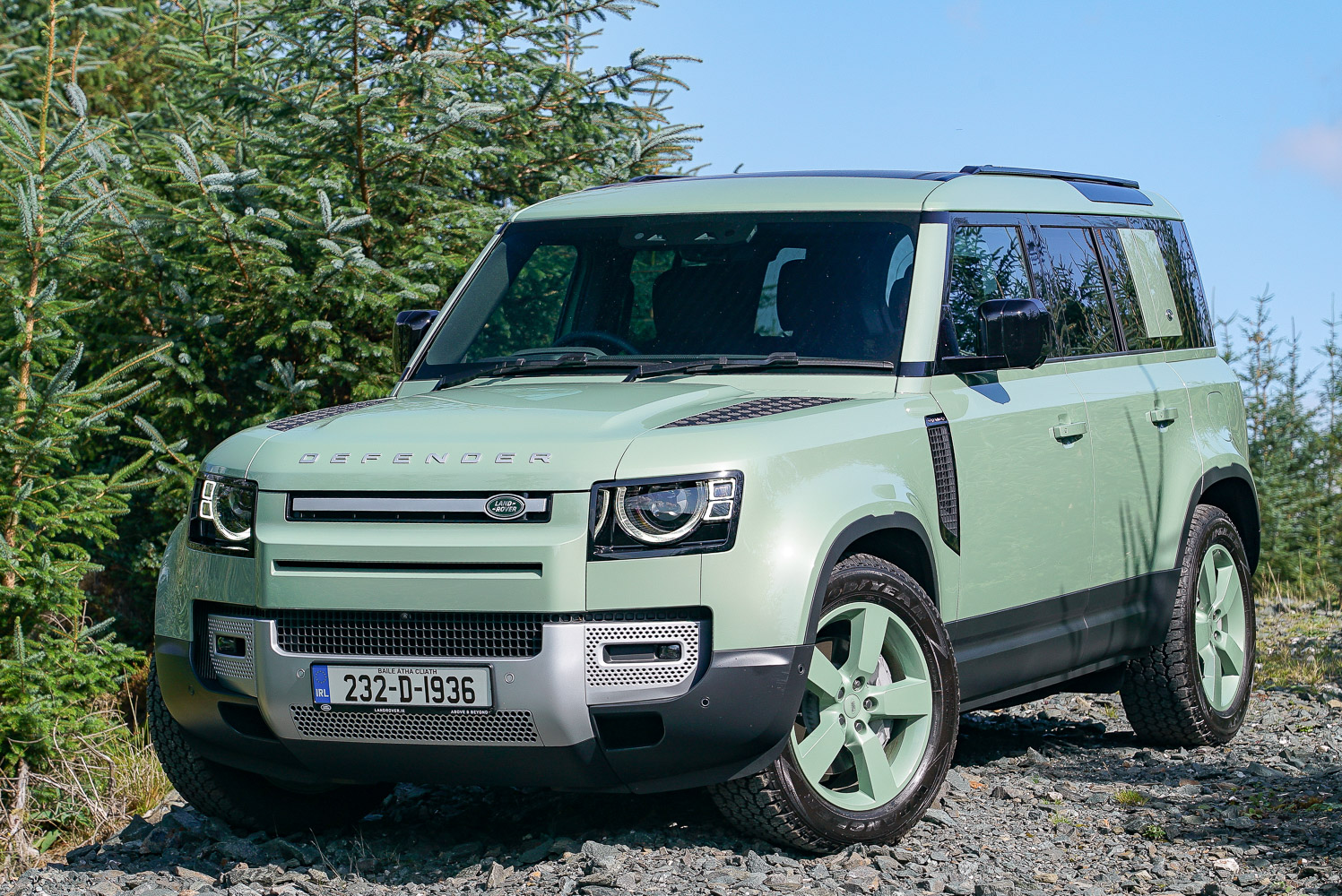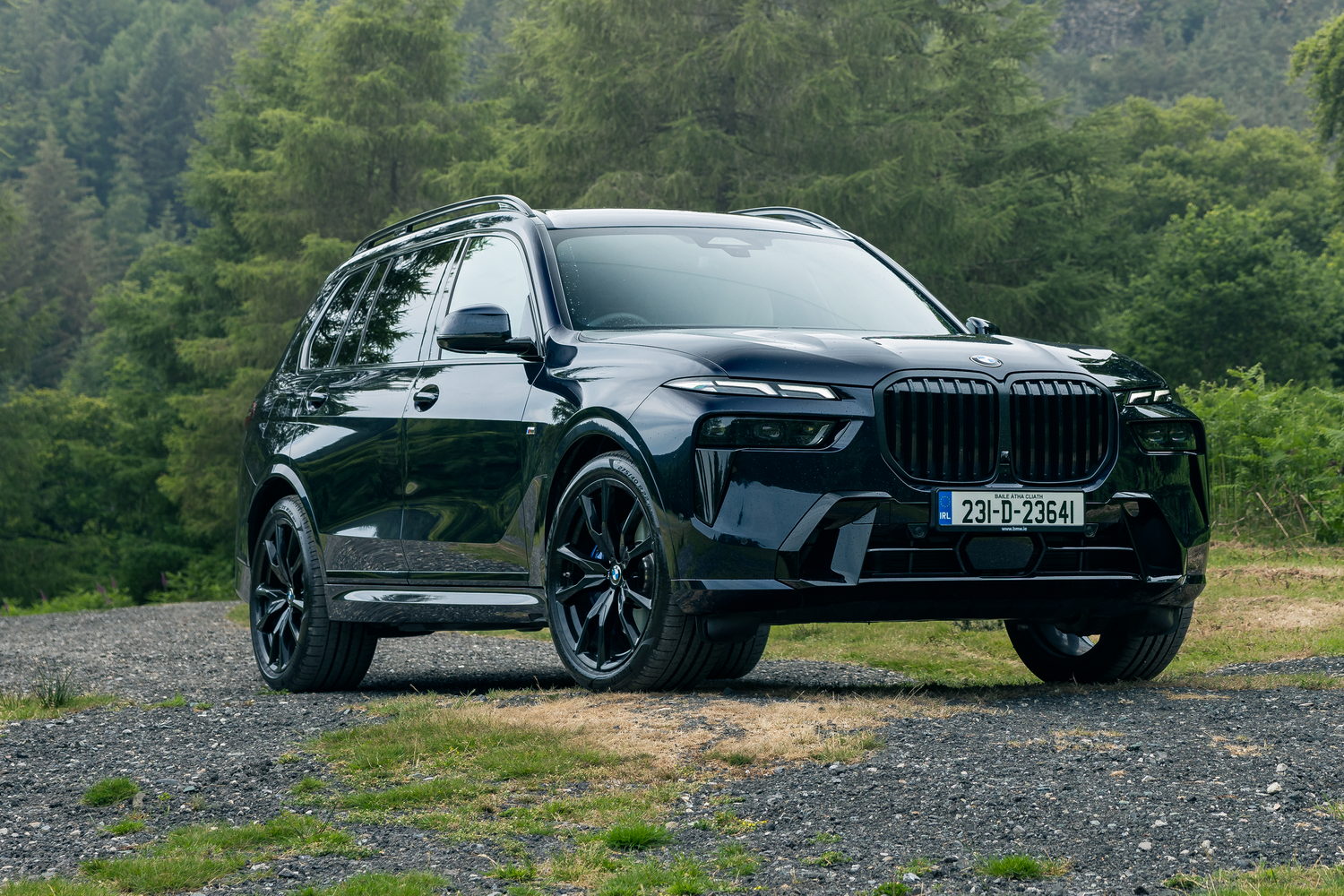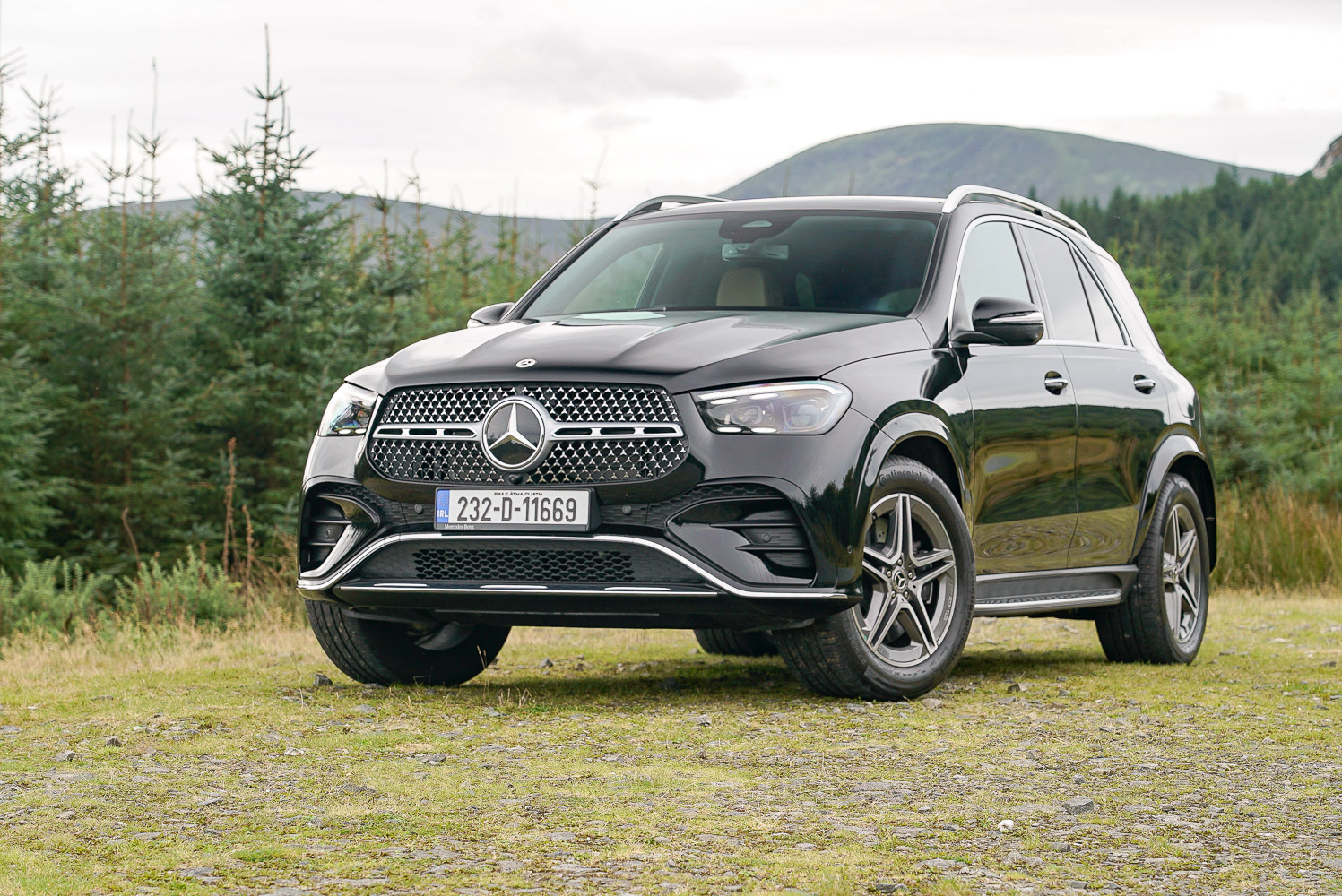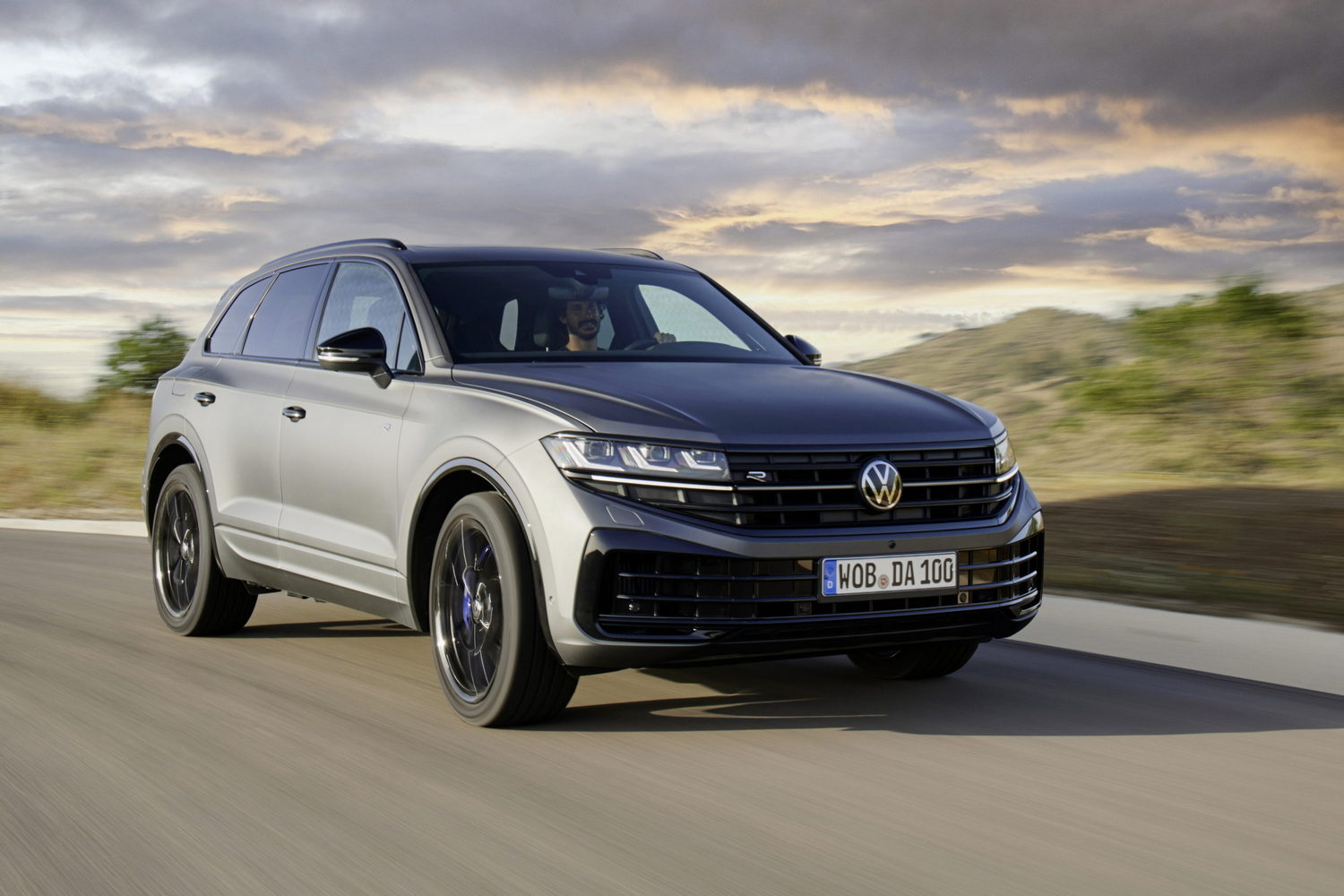Land Rover Defender overview
Launched in 2020, the Defender comes in short, long, and very long forms (badged 90, 110, and 130) with seat layouts that allow for as many as eight occupants depending on the model. It also represents the hardest-working end of the Land Rover lineup. While the likes of the Evoque and Discovery Sport are more likely to be found trailing around suburbia, and the big Range Rover models are destined for the higher-end golf courses of the nation, you can still just about imagine a Defender being used for farm or construction work, albeit that farmer and construction worker would have to be fabulously wealthy, given the hefty prices for any Defender.
It's also a model fighting against a tide of criticism. Many will decry it as being too large, too thirsty and too unsafe for pedestrians and other road users. Are they right? Or does the big Defender, celebrating 75 years of the Land Rover brand, still have a place in this world?
To try and answer that, we're trying out the Defender 75th Anniversary model. A limited-edition that celebrates 75 years since the first Land Rover was built and shown off at the 1948 Amsterdam motor show. By way of tribute to its illustrious predecessors, this one wears a distinctive pale 'Grasmere Green' paint, which is even carried over to the alloy wheels. It certainly won't be to all tastes, but to anyone who's seen the famed HUE 166, that first production Land Rover, it will seem entirely appropriate.
The Land Rover Defender model range
There is a broad offering of both petrol and diesel models in the Defender, with and without mild-hybrid assistance, but the key engine for Ireland - and the one that accounts for all but eight of the 119 Defenders sold in Ireland in 2023 at the time of writing - is the plug-in hybrid.
The Defender lineup is quite complex. All engines are available across all models with the exception of the all-important P400e plug-in hybrid, which is only available in the 110 five-door body, a fact that leaves the three-door 90 and the eight-seat 130 out in the cold in the Irish market.
The most affordable Defender is the two-seat commercial Defender Hard Top, based on the 110 with prices starting from €72,710, but if you want a passenger version, then the next most affordable Defender is the 110 S model priced at €87,727. That's for a P400e plug-in hybrid with 404hp. Next up is a Defender 110 SE with the same hybrid system for €92,710, followed by an X-Dynamic SE for €98,000, again with as a P400e plug-in hybrid.
For €100,270 you can have a P400e 110 in XS Edition form, or there's an X-Dynamic HSE for €105,650. Next up is the first of the diesel models, a D200 mild-hybrid four-cylinder with 200hp, costing €113,843 in 110 SE form. That's followed by a 300hp mild-hybrid D300 90 short-wheelbase in SE spec for €117,635, and then a 249hp mild-hybrid D250 diesel 90 X-Dynamic SE for €117,892. That same engine can be had in 110 SE form for €119,287.
Next up is a D300 mild-hybrid 90 in X-Dynamic SE form for €125,171, followed by a P400e plug-in hybrid 110 in X specification, for €126,110. Next most expensive is the 110 D250 in X-Dynamic SE spec, and then the 90 D250 in X-Dynamic HSE form. Finally, we get to the mighty 525hp V8 engines, which start from a whopping €214,590 for a 90 P525, or €217,420 for a 110 P525. At the pinnacle of the 90 and 110 ranges are the V8 Carpathian editions, costing €226,900 or €229,733.
If you want an eight-seat 130, prices start from €134,711 for the D250 mild-hybrid SE, rising to €141,417 for a D250 X-Dynamic SE, and then €158,293 for the petrol-powered 400hp mild-hybrid P400 Outbound model. The top spec 130, for now, is the P500 V8, shorn of 25hp compared to its 90 and 110 brothers, and costing €221,977.
Standard spec for the basic S model includes 19-inch alloy wheels, synthetic black leather upholstery that Land Rover calls 'Resist', 12-way power adjustment for the front seats, keyless entry, 360-degree parking system and Land Rover's impressive 'Pivi Pro' infotainment system.
SE models add 20-inch alloys, automatic high-beam headlights and a Meridian sound system. X-Dynamic SE models get a different 20-inch wheel design and upgraded upholstery, while X-Dynamic HSE versions get a satin-grey finish for their 20-inch wheels and a larger 11.4-inch central touchscreen for the Pivi Pro system, along with 14-way adjustable seats which are now heated and ventilated.
The XS Edition model gets diamond-turned 20-inch wheels, a digital rear-view camera system, a sliding panoramic roof, black roof rails, 12-way heated and cooled seats, grained leather, refrigerated compartment in the front centre console and a digital driver's display.
The Defender X comes with 20-inch diamond turned alloys, dark-tinted brake lights, Matrix LED headlights, 'ClearSight' digital rear-view mirror, two-tone Windsor leather upholstery and a head-up display.
The Outbound gets black-finished 20-inch alloys, the 11.4-inch infotainment screen, the digital driver's screen and blind-spot assistance.
Lastly, the Defender V8 and Carpathian get 22-inch alloys, Matrix headlights with power wash, automatic headlight levelling, ClearSight mirror, leather and suede seats, a heated steering wheel, the refrigerated armrest box and a Meridian surround-sound stereo.
Defender CO2 emissions range from as low as 57g/km for the P400e plug-in hybrid, through 215-233g/km for the diesel mild-hybrid engines, up to 236g/km for the petrol P400 MHEV, and a whopping 333g/km for the V8s.
On the safety front, the Defender scored a maximum five-star rating when tested by Euro NCAP in 2020, with an 85 per cent rating for adult occupant protection, and the same score for child occupants. Interestingly, it also scored a 71 per cent rating for the protection of vulnerable road users - a better score than some much smaller, lighter cars including the likes of the Ford Puma, the Honda e, the Hyundai i10, the Cupra Formentor and the Opel Mokka managed.
The Land Rover Defender 75th Anniversary interior
If there's one thing you can unquestionably say about the Defender's interior, it's that it's enormously practical. In fact, it's almost a half-way house between a conventional car and a large van, given the huge amount of storage and space in the cabin. The main section of the dashboard is basically an open shelf, lined with rubber so that items won't slide around nor rattle. It's also peppered with USB ports and a 12-volt socket too, with more such connectors down low on the centre console. The finish is utilitarian, but with a luxurious edge - such as the slightly rough-to-the-touch green powder coating, and the embossed 'Defender' logo that stretches across the passenger side.
From the high-set driver's seat, you'll notice that the windscreen seems a touch shallow and upright, compared to most rivals', but outward visibility is excellent, and of course this being a Land Rover, you can see the edges of the bonnet from where you're sat, so there's little difficulty in threading this behemoth through tight traffic.
There's lots more storage space in the vast door bins, and in the open area between the front seats. Our test car came with a full centre console, including cupholders and a refrigerated compartment, but you can option the Defender up with a 'jump' seat in the centre of the front row. It's not the roomiest seat ever, but kids love it.
The steering wheel is big and chunky, and behind that there is a neat and simple-to-use digital driver's display. The 'Pivi Pro' screen in the centre of the dash is a model of simplicity and clarity, and has a straightforward menu layout that's quite easy to find your way around. It helps that the heating and air conditioning controls are still represented by chunky, physical buttons and multi-function rotary dials next to the stubby gear selector (all Defenders are automatic-only these days) and are wonderfully simple to use. Sadly, it looks as if Land Rover is steadily abandoning these controls in favour of more touchscreen menus (it's already happened to the latest 2024 model year Range Rover and Range Rover Sport) and all we can say is that's a massive mistake.
In the back, there's space for three adults across the large bench seat, although of course the person sat in the centre will be the least comfortable, but it's better than that of most rivals. The floor in the back is almost completely flat, which does help when it comes to foot space, and headroom and legroom are generous, as is the view out through the large side windows. The little 'Alpine Light' glass sections in the roof help to let in a bit of extra light for those sitting in the back, too.
There are numerous useful touches, such as rear seat air conditioning controls, extra USB and 12-volt sockets, and large grab handles on the insides of the B-pillars - helpful when you're hauling yourself up into the car, and they double up as coat hooks. Overall quality, front and rear, is excellent although as ever quality (and reliability) can be a Land Rover weak point.
The boot is a slight let-down, which sounds a bit odd when there's 670 litres (if you pack it to the roof) available. The problem is that the P400e plug-in hybrid model needs somewhere to put its battery, so you sacrifice 116 litres of space compared to the diesel models, and the boot floor itself is raised up by 36mm, creating a distinct step just inside the vast, side-hinged tailgate. The other downside is that, because of the battery, you can't have this P400e in seven-seat form, so it's only a five-seater (or a six-seater if you get the front jump seat). The luggage cover also feels a bit flimsy.
Still, it's wildly more practical and useful than anything this side of a pickup, and there are handy controls just inside the boot door that allow you to drop the rear of the Defender on its air springs, to aid loading heavy or bulky items, and the rear seats fold - flat - in 40:20:40 formation, maximising your ability to carry loads and passengers at the same time.
The Land Rover Defender driving experience
Plug-in hybrids have come in for more than a bit of flak in the past few years, as environmental campaigners have criticised them as 'fake electric cars' and accused owners of never charging them up nor using the electric side of the powertrain properly. To that, Land Rover has hit back saying that it can see from data coming in from its PHEVs in for service that its customers are extensively using the electric-only capability of the cars.
Certainly, the Defender makes using its EV abilities pretty easy. The battery has 15.4kWh of useable capacity, so it's not a range monster in the style of a Mercedes GLE or Land Rover's own plug-in hybrid Range Rover models, but it can still manage an official 51km of electric motoring on a full charge, and we were able to get above 40km of range pretty easily on average. Better yet, the Defender can be fast-charged from a DC public charging point, at up to 50kW. This allows you to top up the battery in about 15-20 minutes, which is hugely handy for stretching your electric range on a long journey.
The Defender P400e also impresses when it comes to overall fuel economy. Unlike many PHEVs, even far smaller ones, which deliver atrocious long-range motorway economy, the Defender settles down to around 9.0 litres per 100km on a long run. That's not exceptionally frugal or anything, but comparable with what you'd get from one of the diesel engines.
Those long journeys are the Defender's forte. Yes, there's plenty of wind noise around the upright windscreen and those massive door mirrors, but otherwise it's a serene cruiser with a lovely ride quality on its air suspension, and a sense of total effortlessness. Obviously, it's a little less accomplished around town, where its sheer size means it can be a challenge in tight spaces, but that previously mentioned visibility, and a tighter-than-you'd-think turning circle means it's not as barge-like as you might imagine.
On curvier roads, the Defender is far from being all at sea. OK, so it's hardly a GTI but although the steering is light and not very informative in the sense of pure road feel, it's fast and accurate and you can guide that big, bluff nose tighter into an apex than you'd expect. It does lean, of course, but not excessively, and the combination of 404hp and 640Nm of torque means that the Defender is pretty fleet of foot. It'll hit 100km/h from rest in just 5.6 seconds. So maybe it is a bit of a GTI after all.
Almost needless to say, it's off-road where the Defender is truly exceptional. Even on road-biased tyres, it flew around the short, but tricky, off-road course on which we tested it. The suspension - optional air springs on our test car - can raise the car up to increase its ground clearance, and you can choose from a wealth of different off-roading modes through the Terrain Response System. To be honest, you don't really need them - we did almost all the course in Comfort mode, yet the Defender shrugged off melted-chocolate mud along with steep climbs and descents. The wading depth of 900mm is also hugely useful.
Better still, thanks to one of those quick top-ups at a fast DC charging point, we were able to complete the off-road section on purely electric power, and still had some left for a chunk of electric driving on the way home afterwards.
Our verdict on the Land Rover Defender 75th Anniversary
There are plenty of people out there who will utterly hate your guts for simply driving a Defender, and who will happily and repeatedly take to social media to point this out. Ignore them - particularly in P400e form, the Defender is far from the planet-destroying monster that it's portrayed, albeit it's really the kind of car you should only buy if you need to make full and regular use of its astonishing breadth of capabilities. To have a Defender and only use it on the school-and-supermarket run would be a crime, to be honest. This 75th Anniversary edition reminds us of Land Rover's past glories, with its retro colour scheme, but it - much more importantly - points the way forwards with its electric-only ability. It's a true all-rounder with an astonishing depth of talent.
What do the rest of the team think?
The Defender is undoubtedly a brilliantly-engineered machine with an incredible breadth of capability. Sure, it's too big to be taking into an urban environment regularly, but its plug-in hybrid system makes the whole concept a little more palatable. Shame that means less boot space and, while it's no less efficient than the - way more expensive - diesels, it really does need its battery topped up to be at its best. If you can do that easily then the P400e is undoubtedly the pick of the range. And the 75th Anniversary model? I like the paint colour and the green interior accents, but the green wheels are a step too far for my taste. Other opinions are available...
Shane O' Donoghue - Editor

